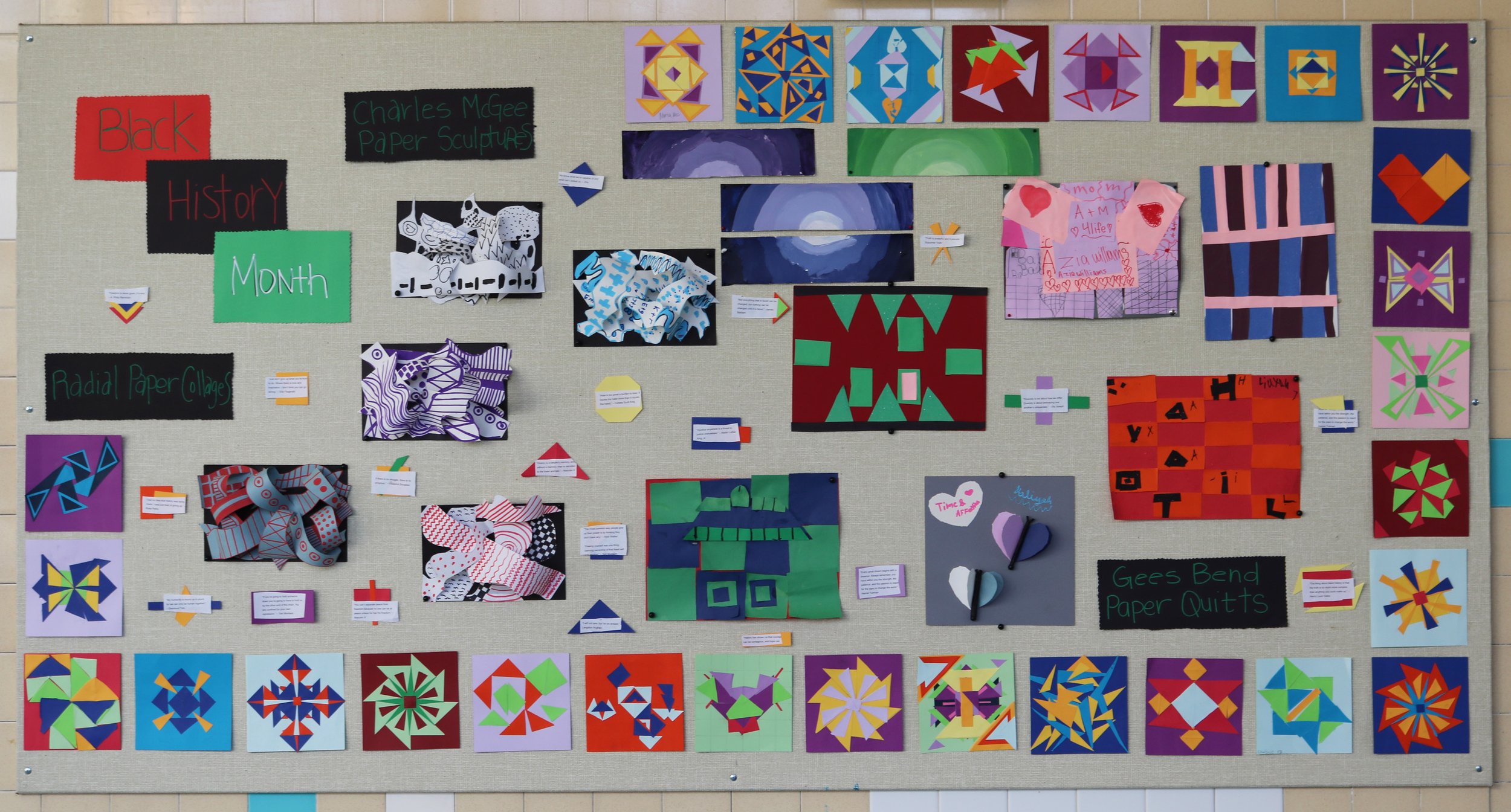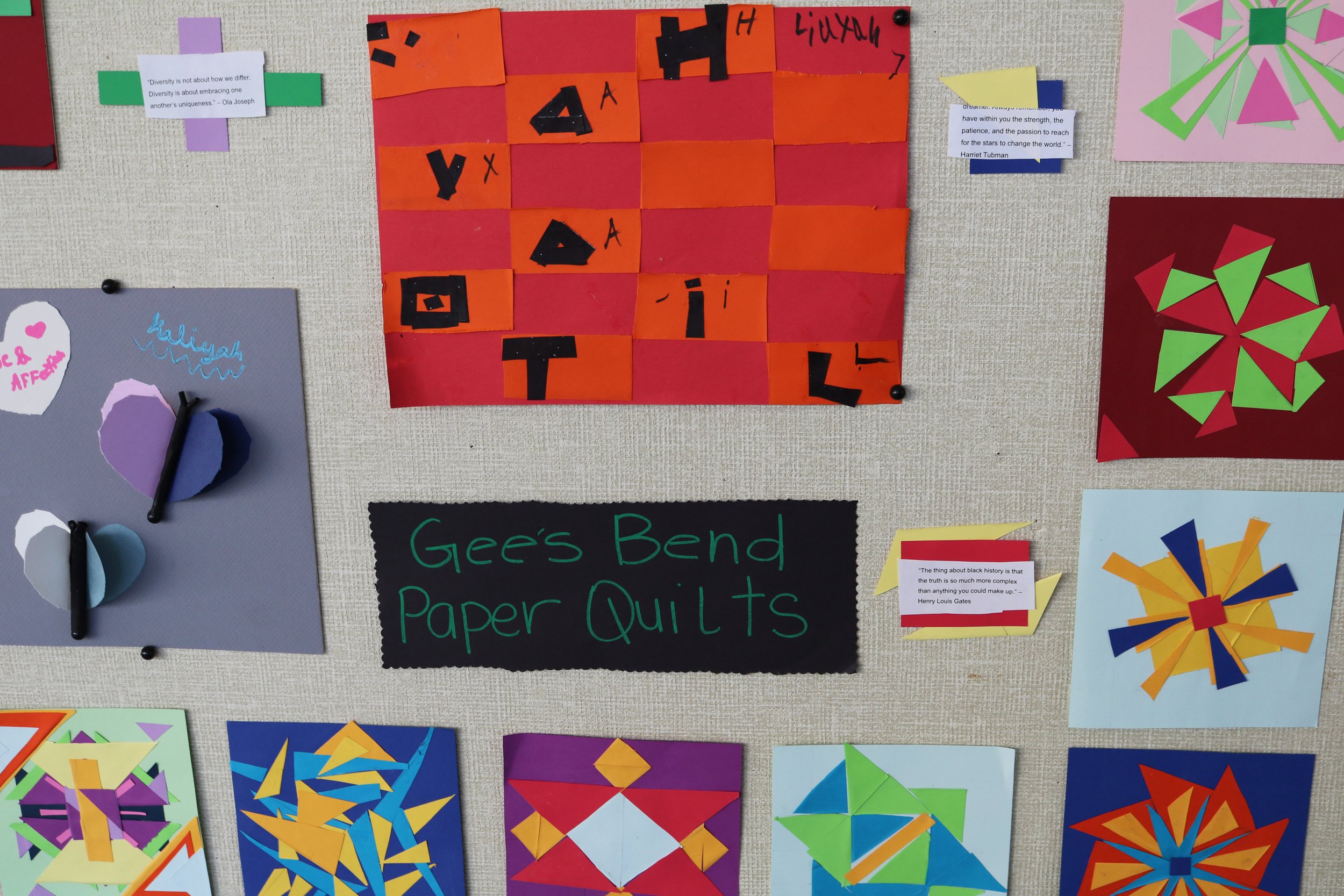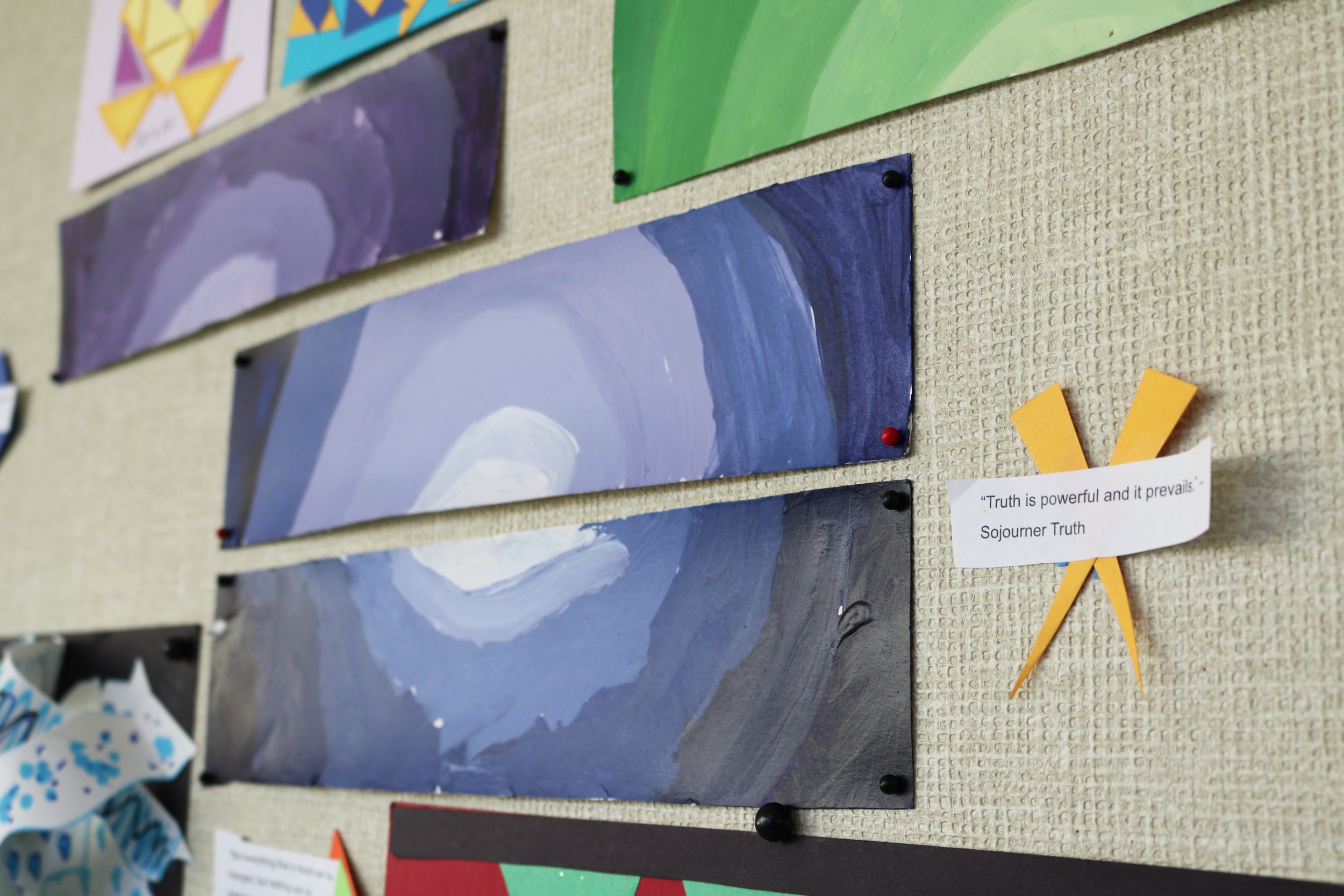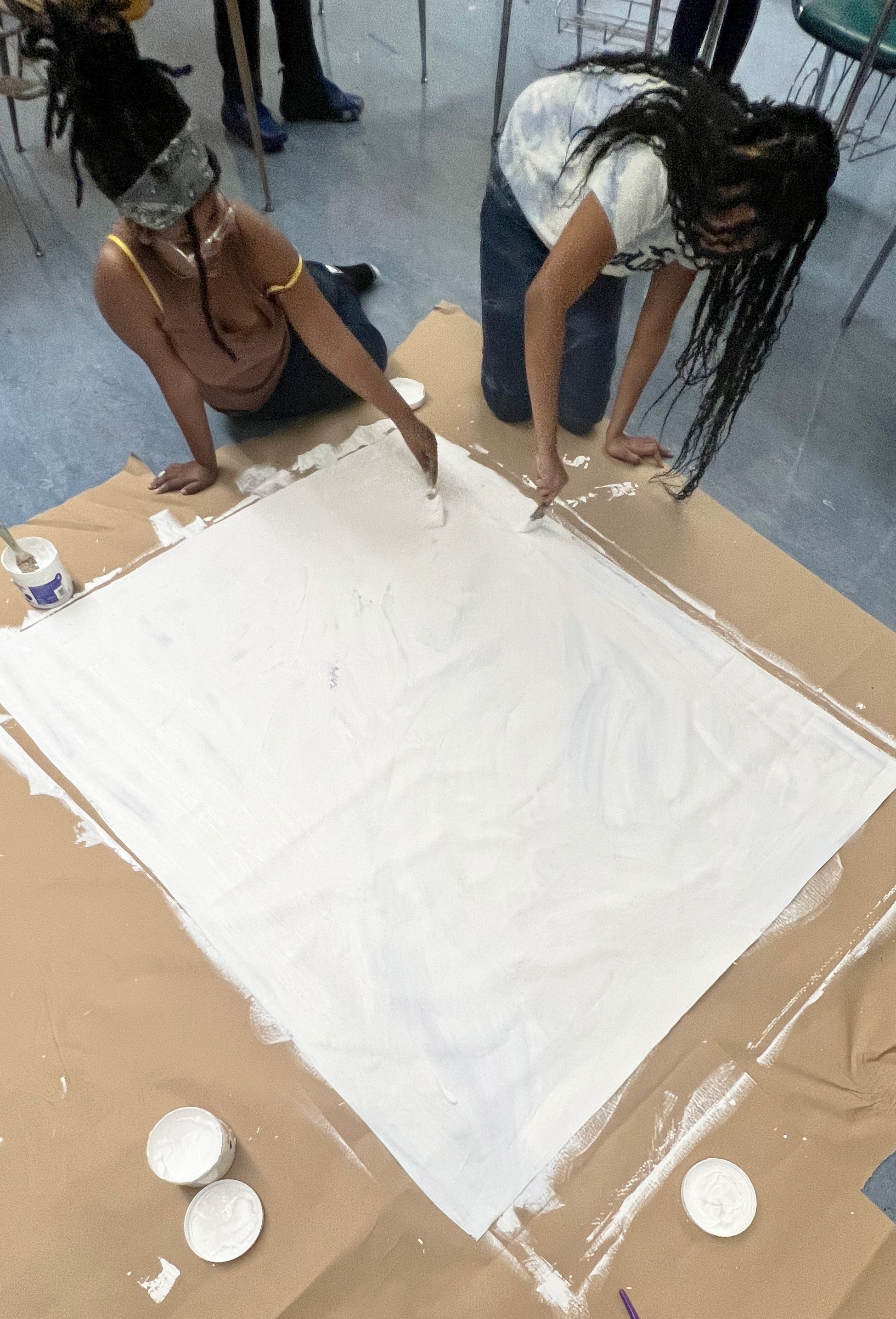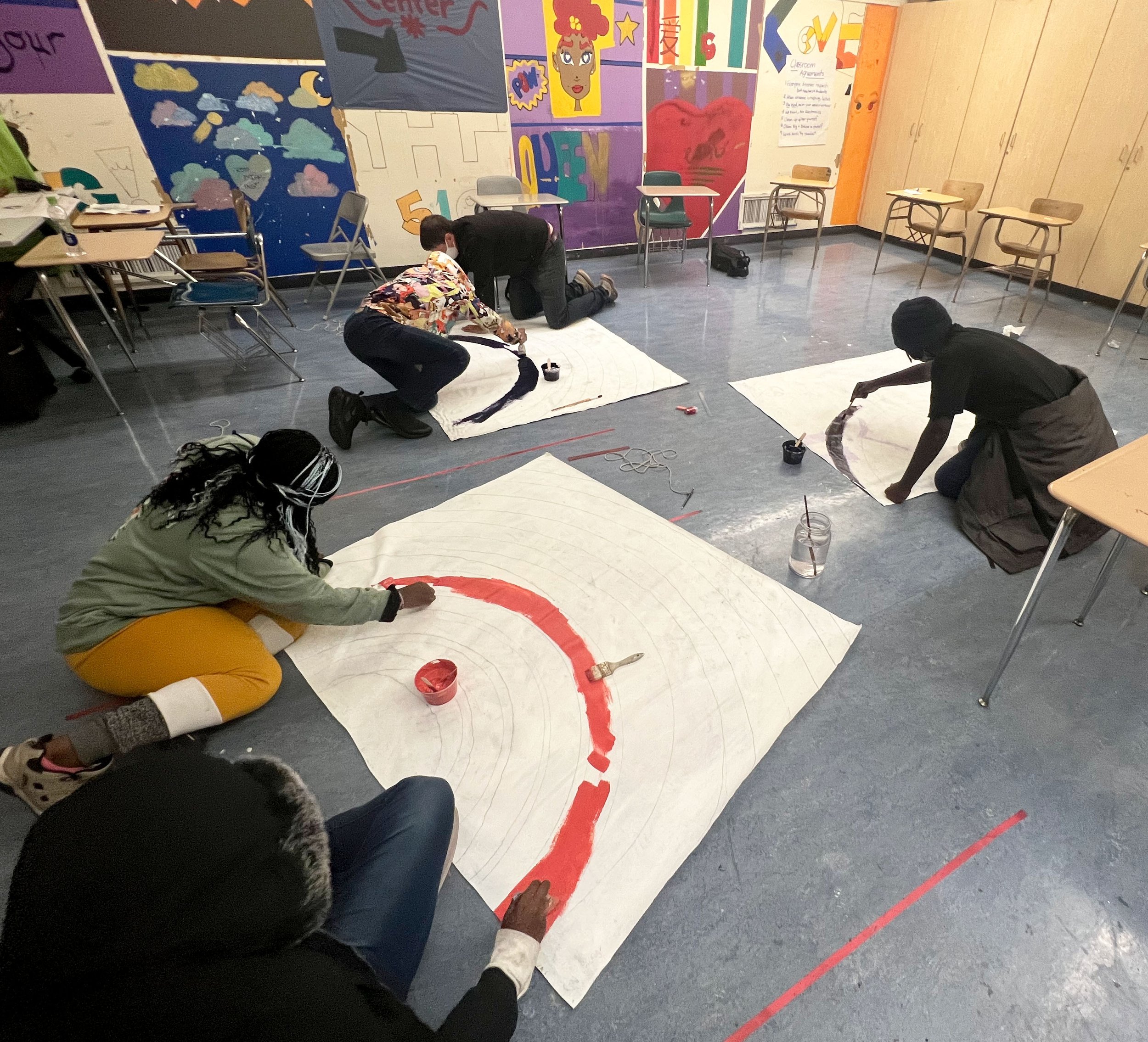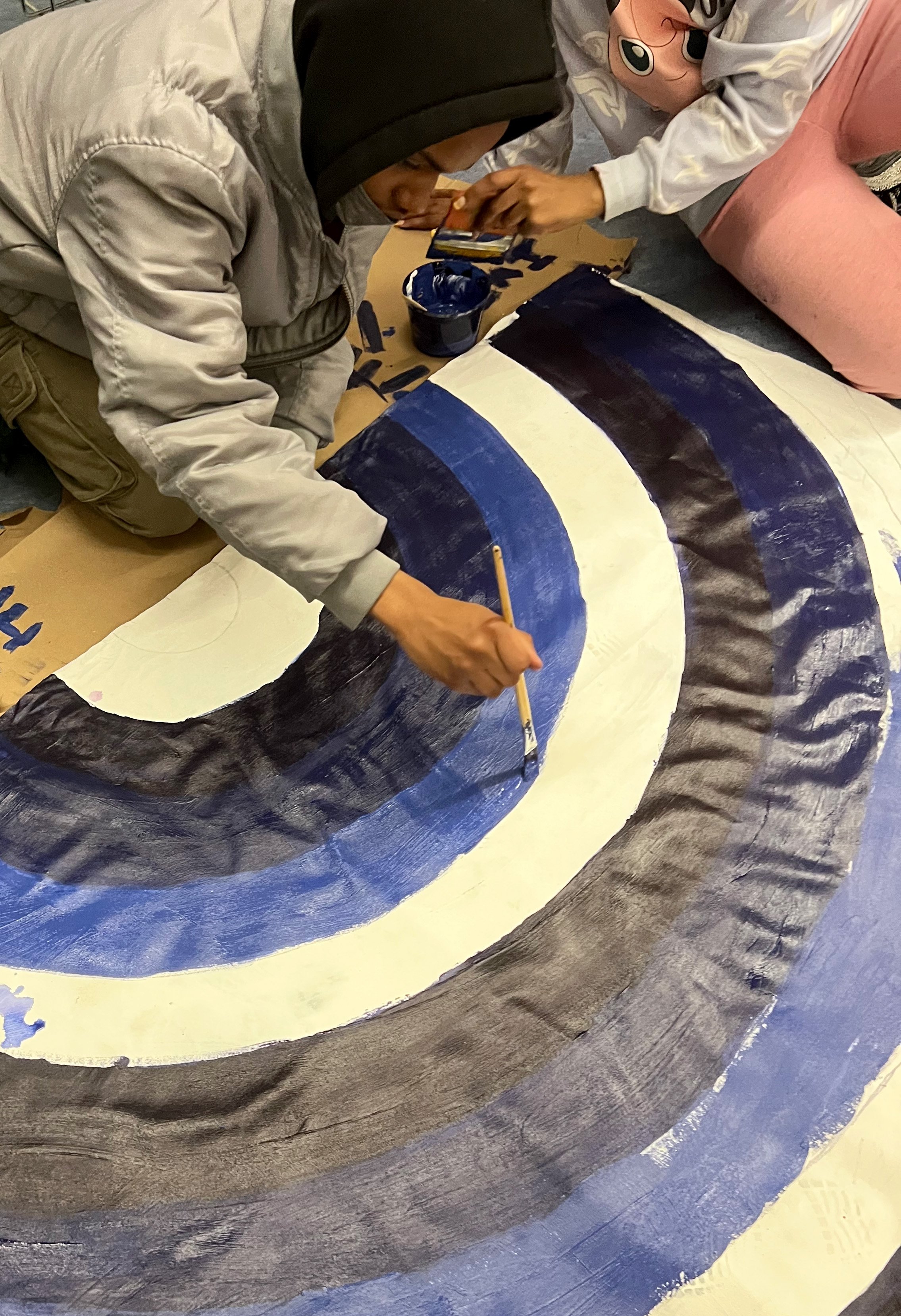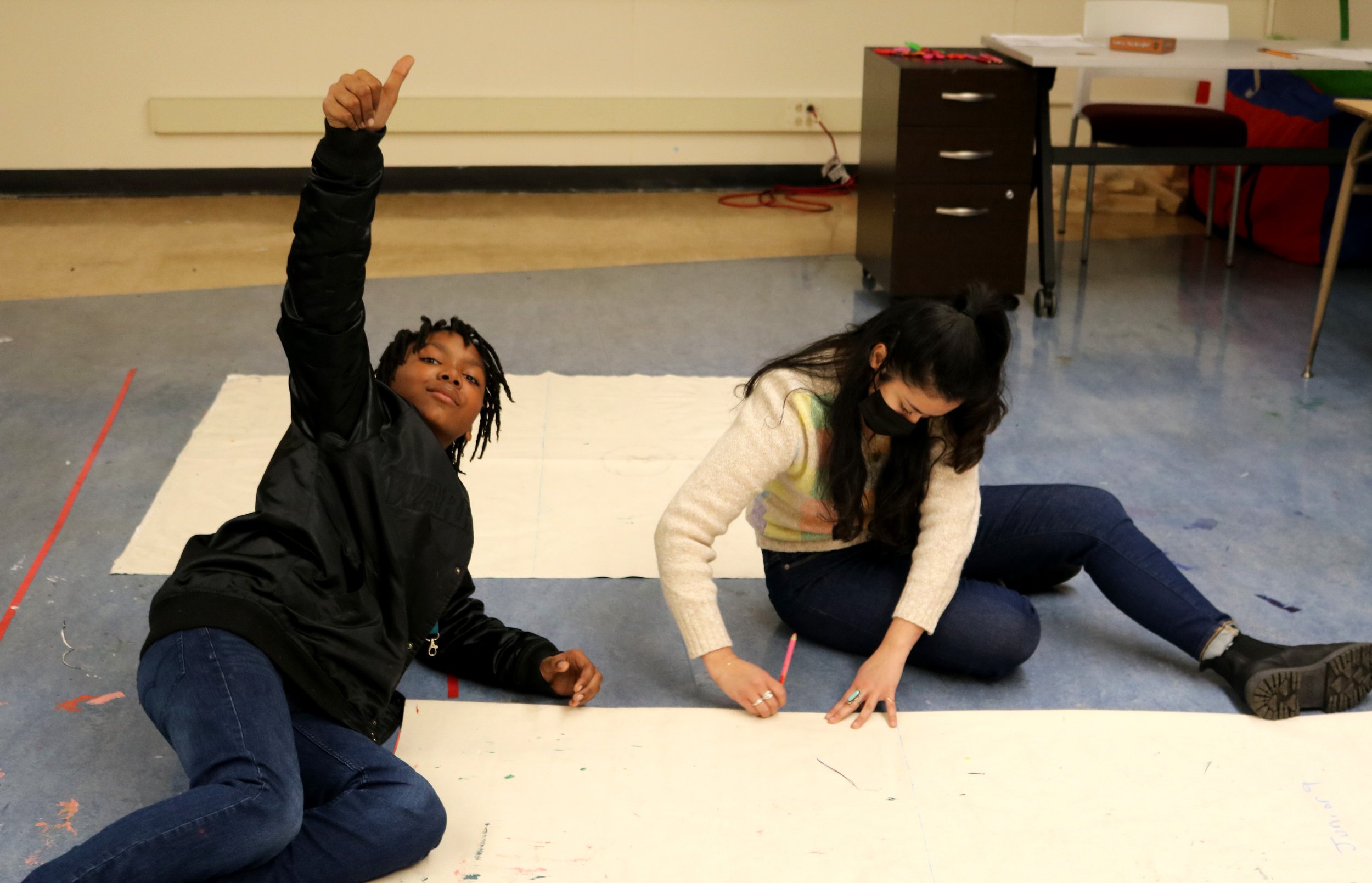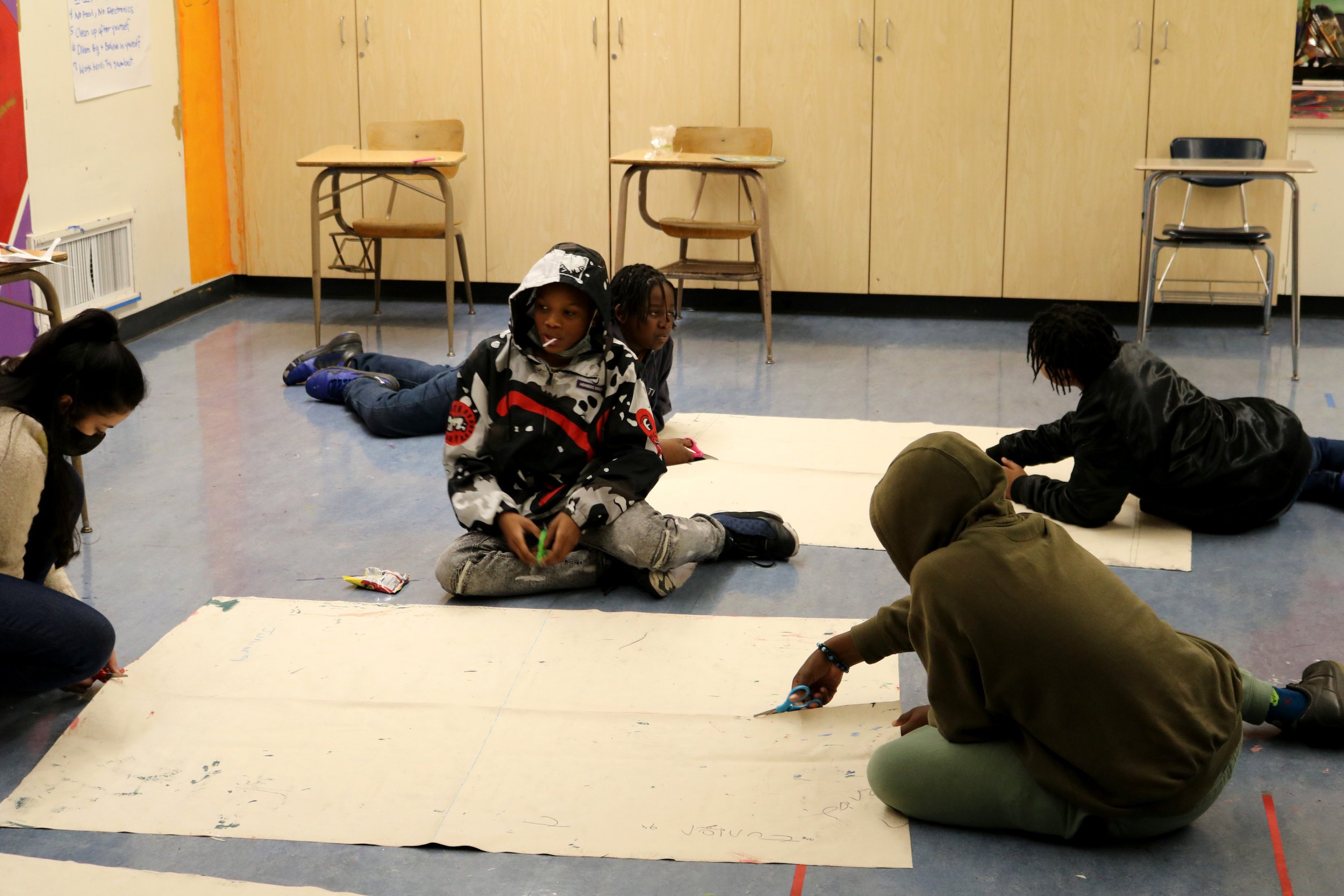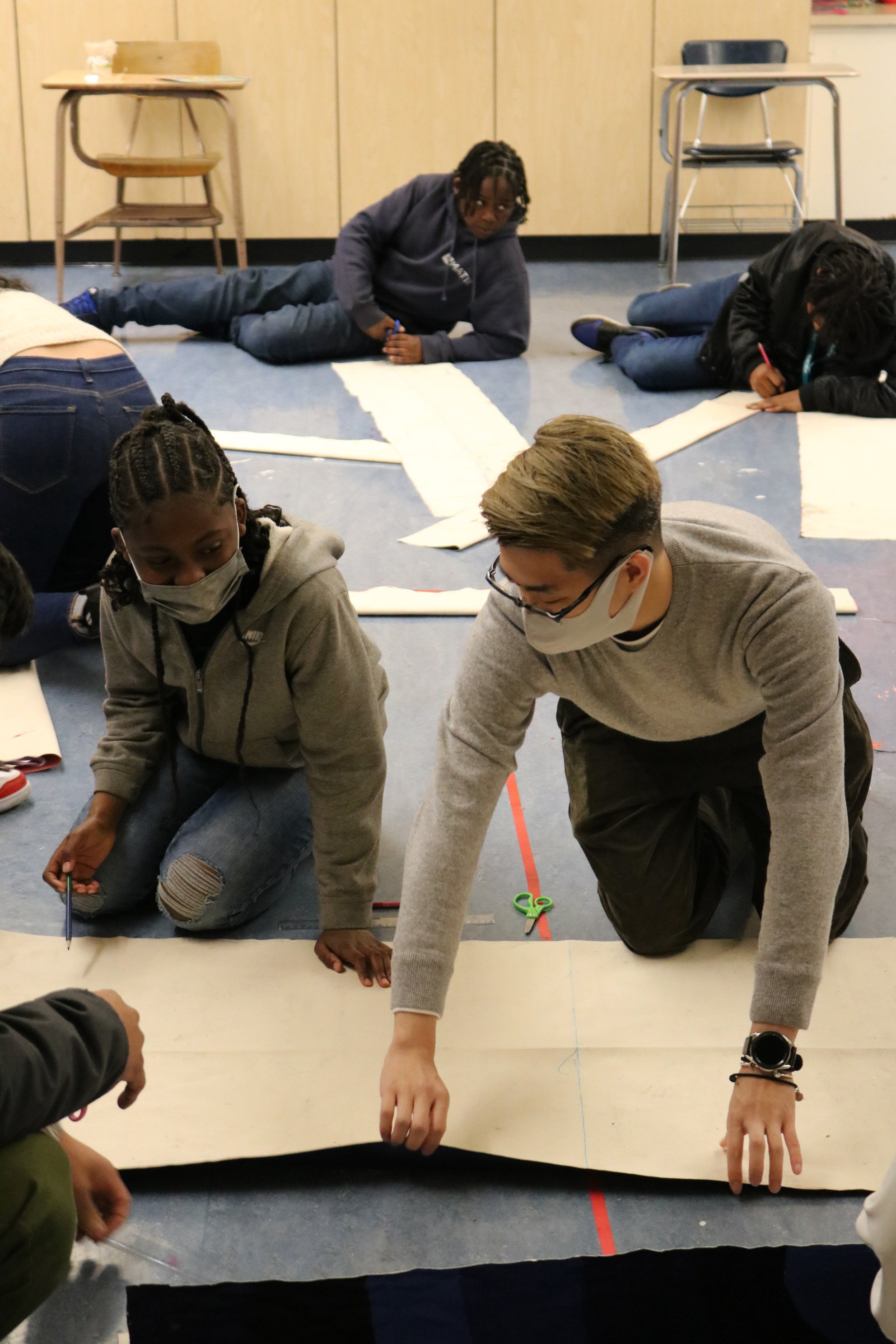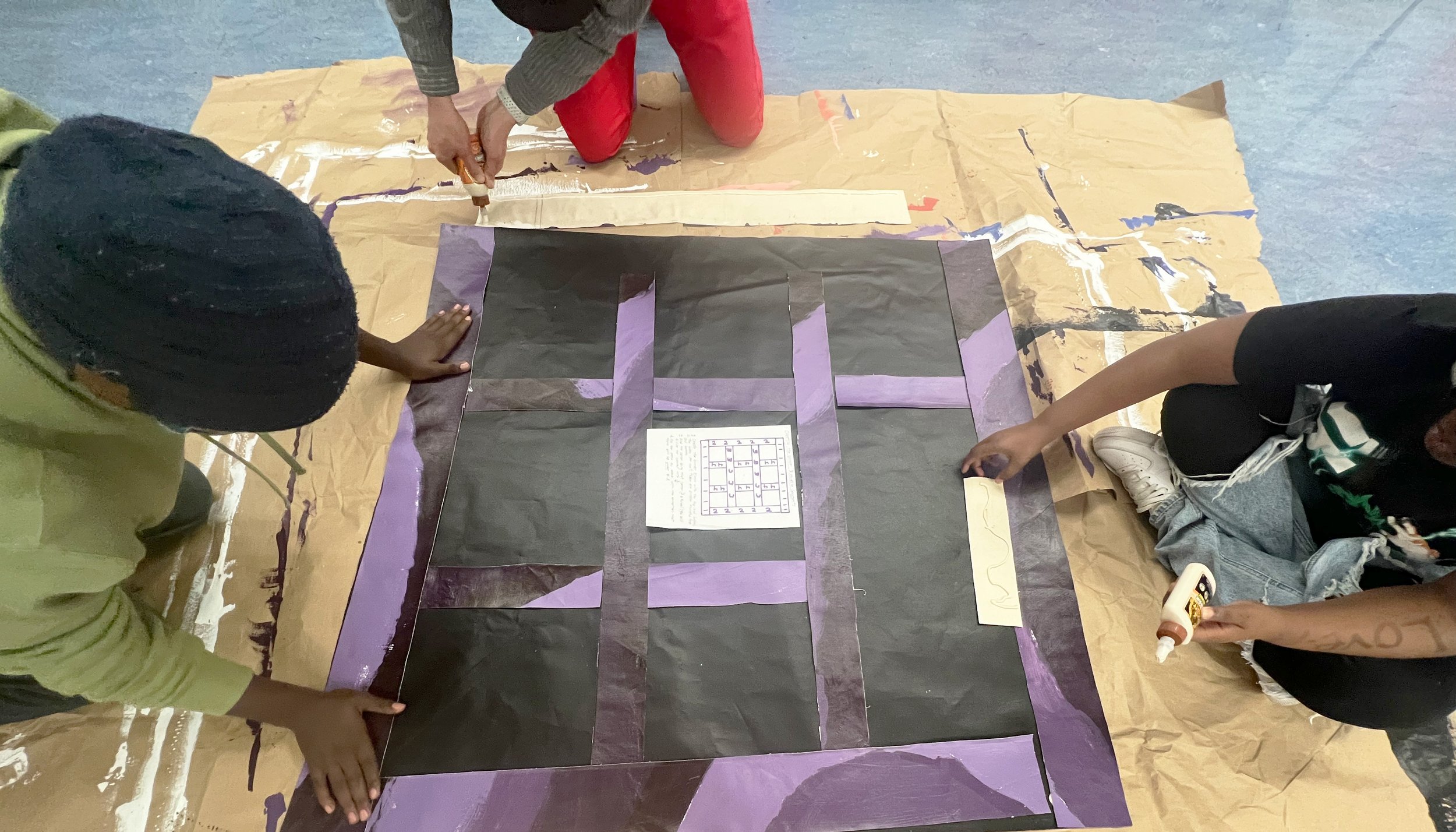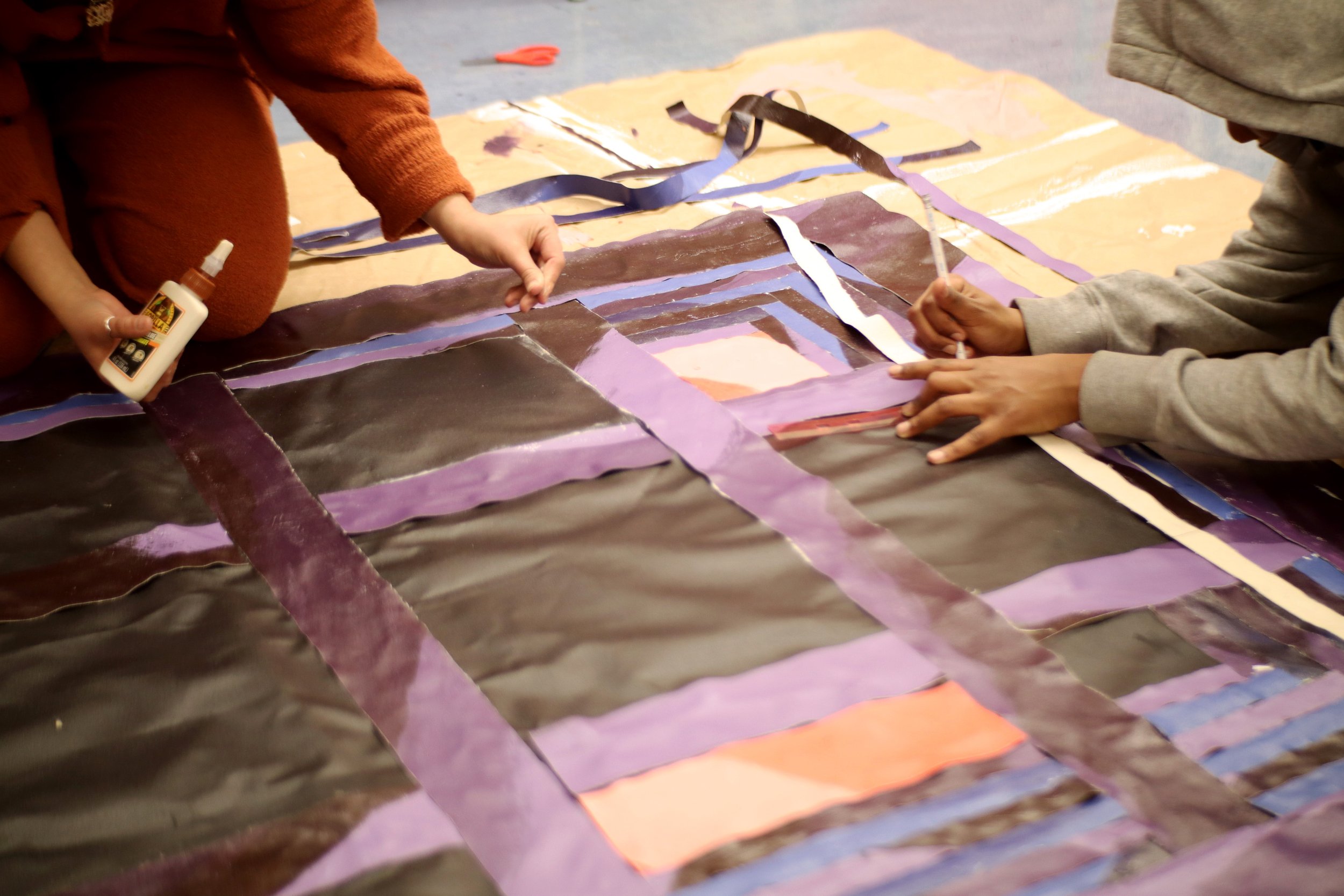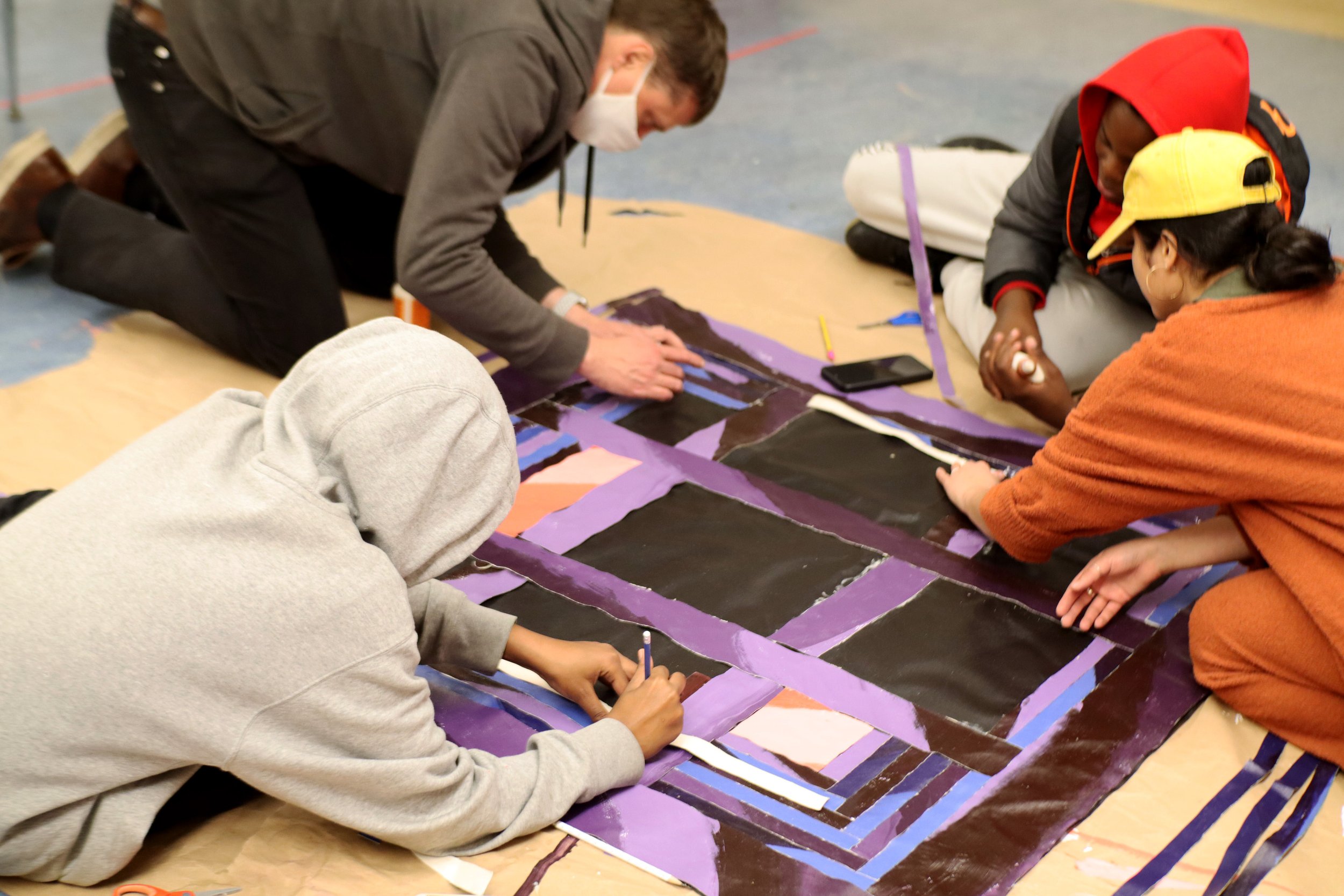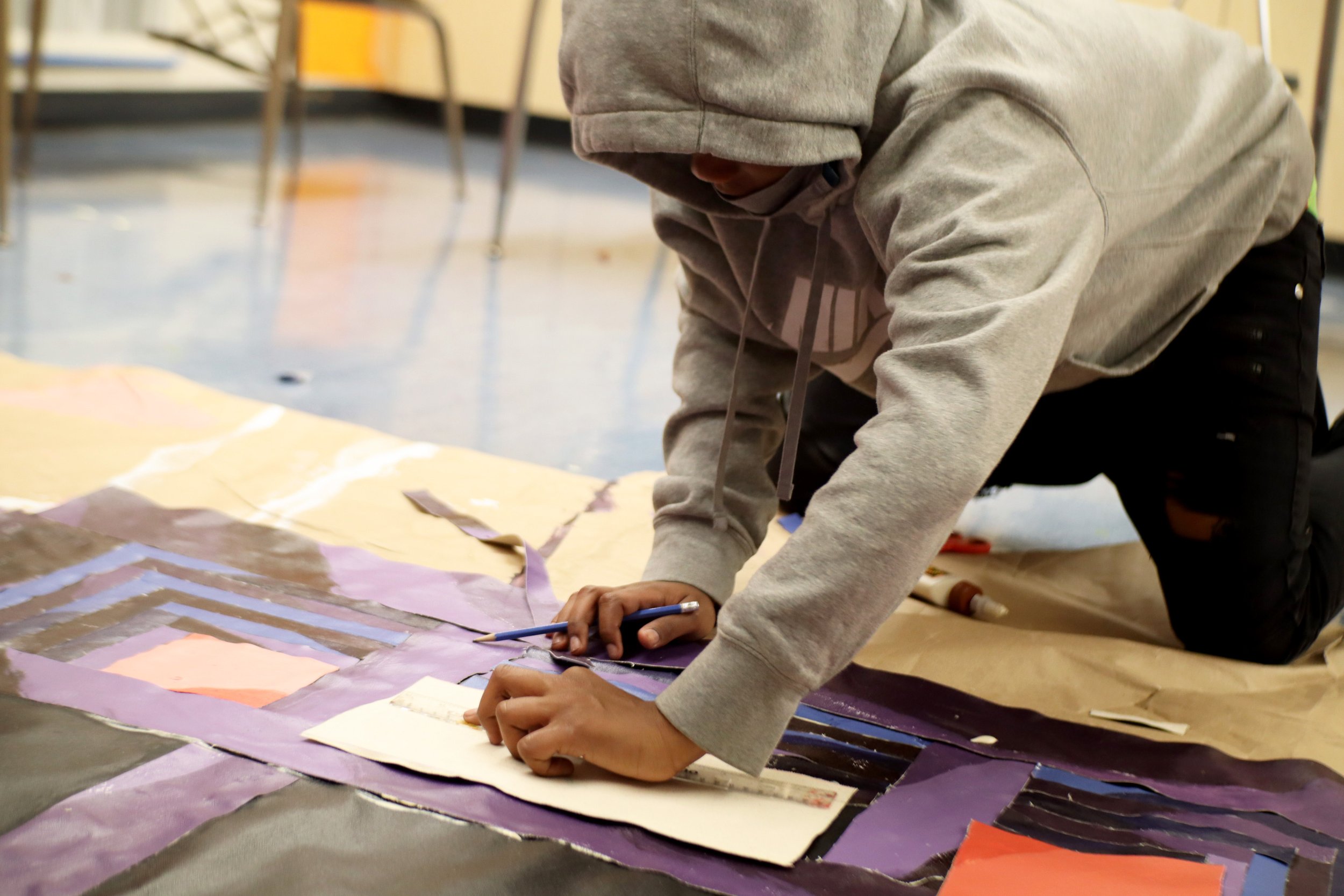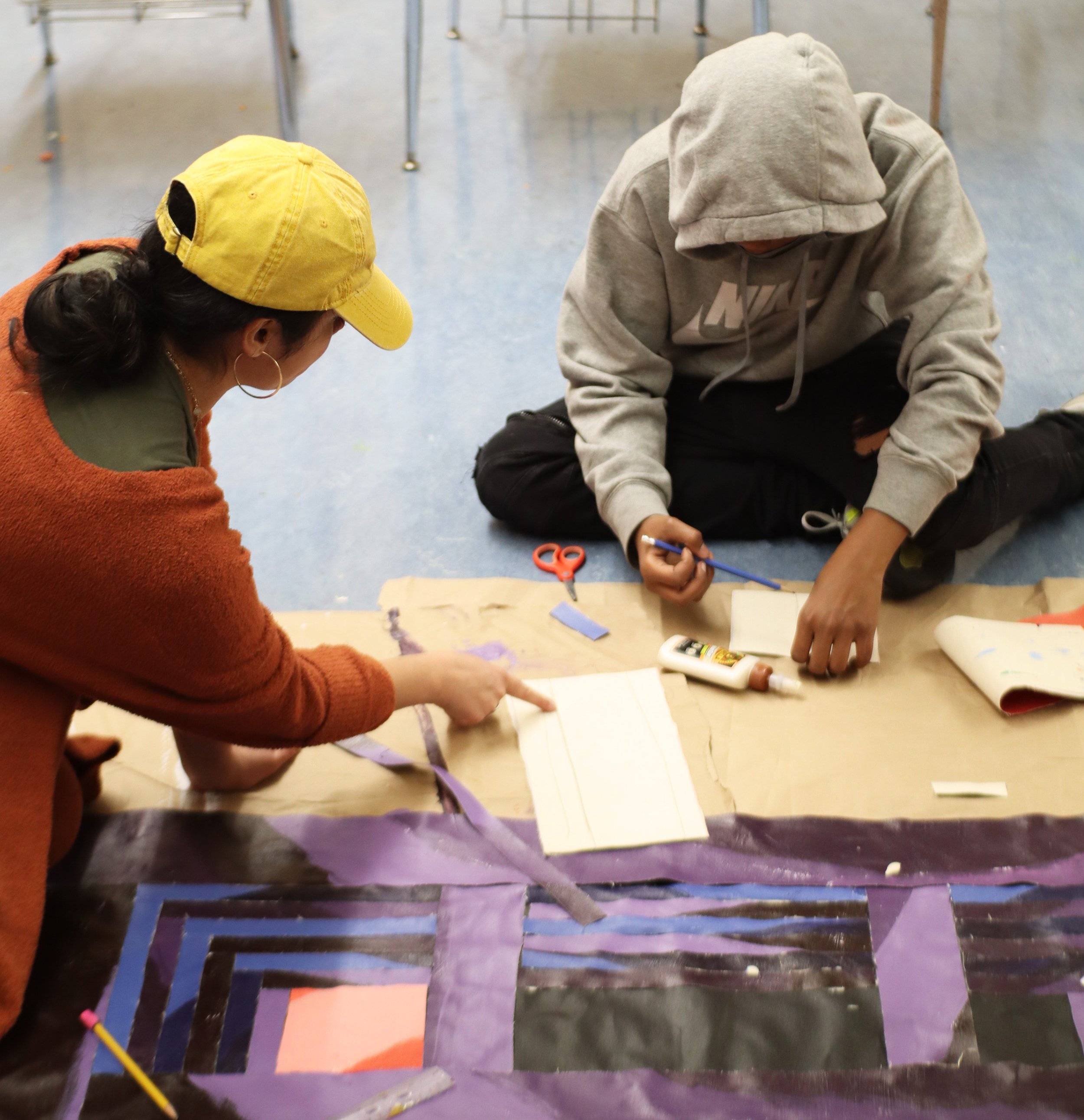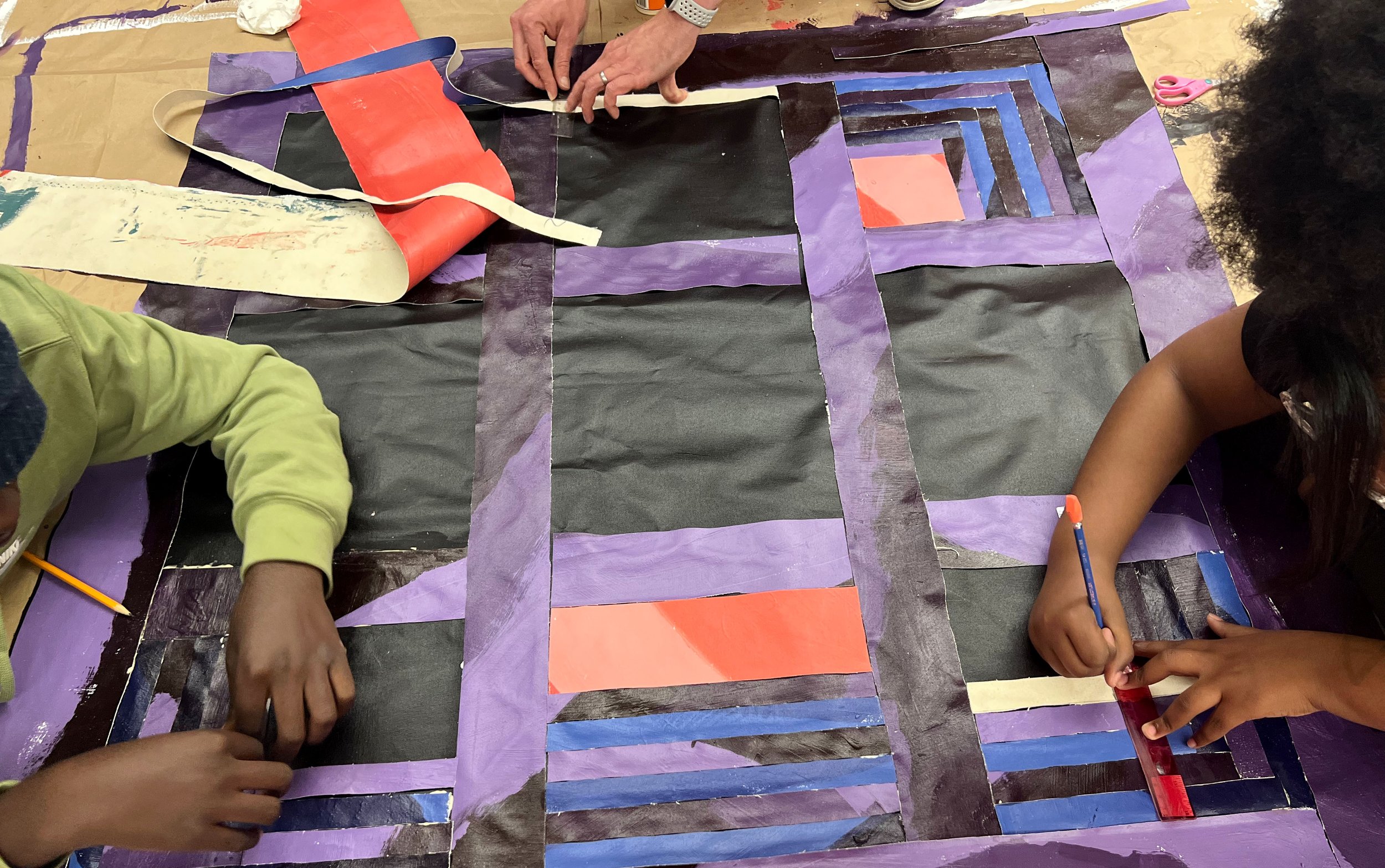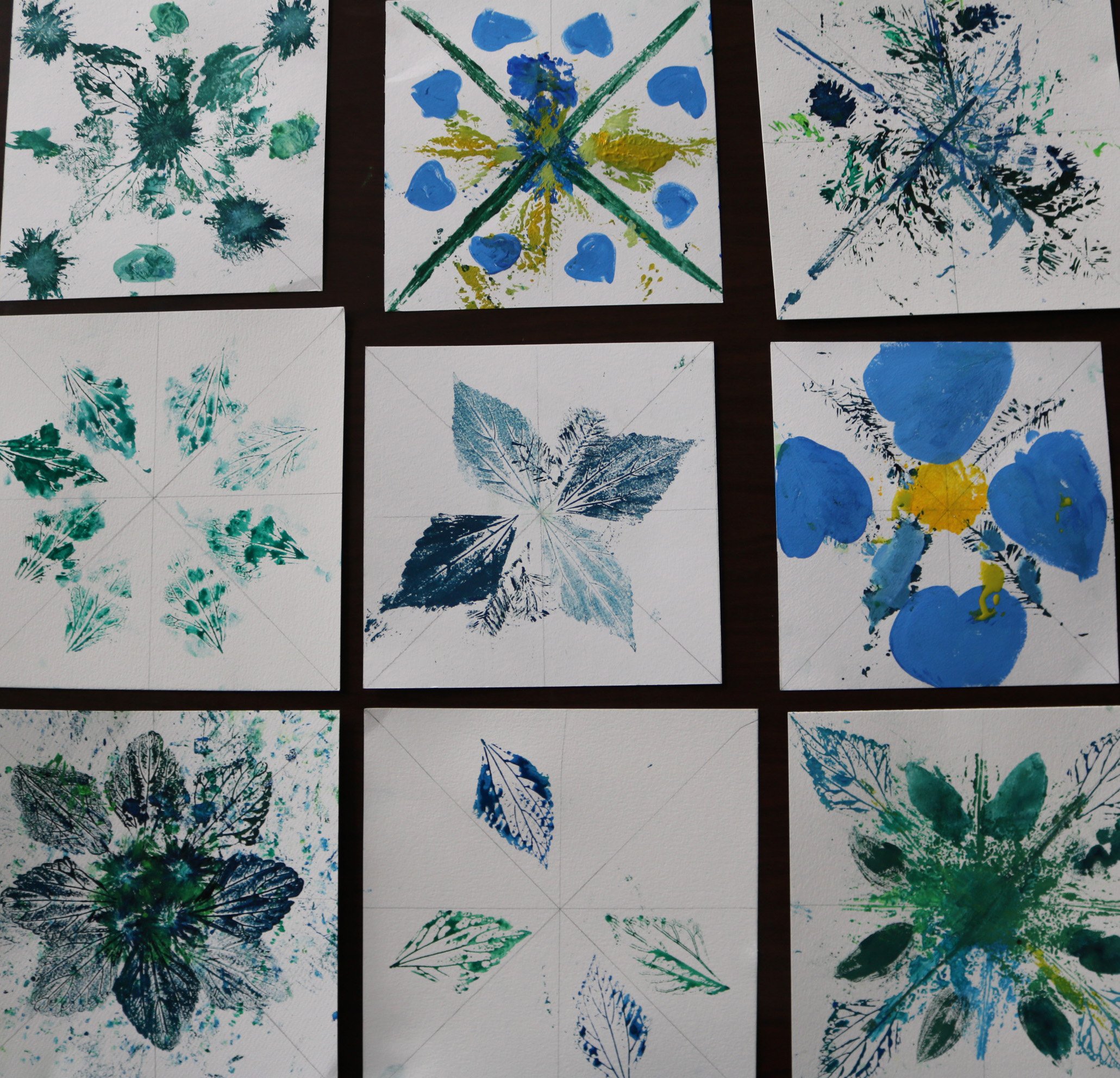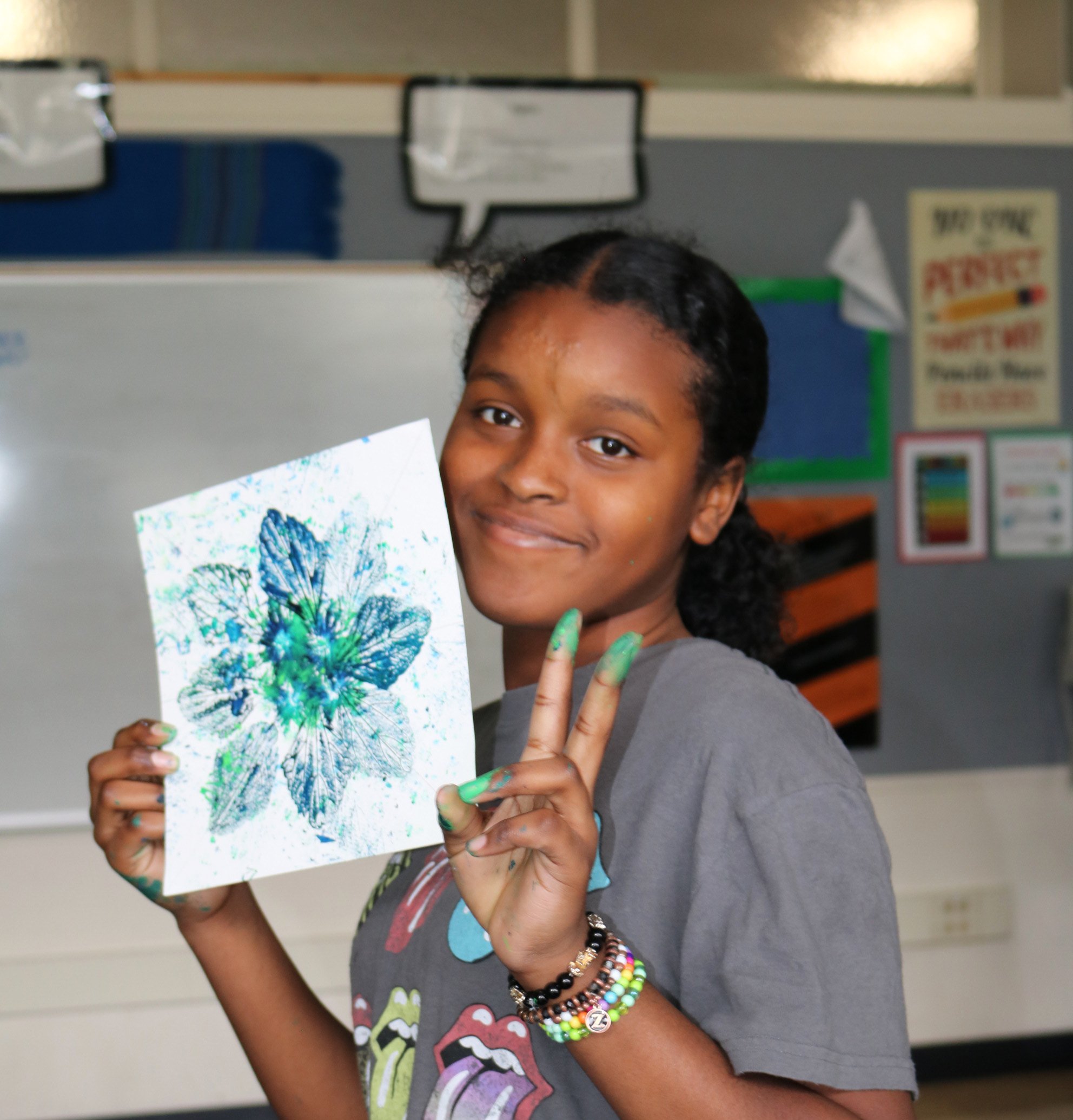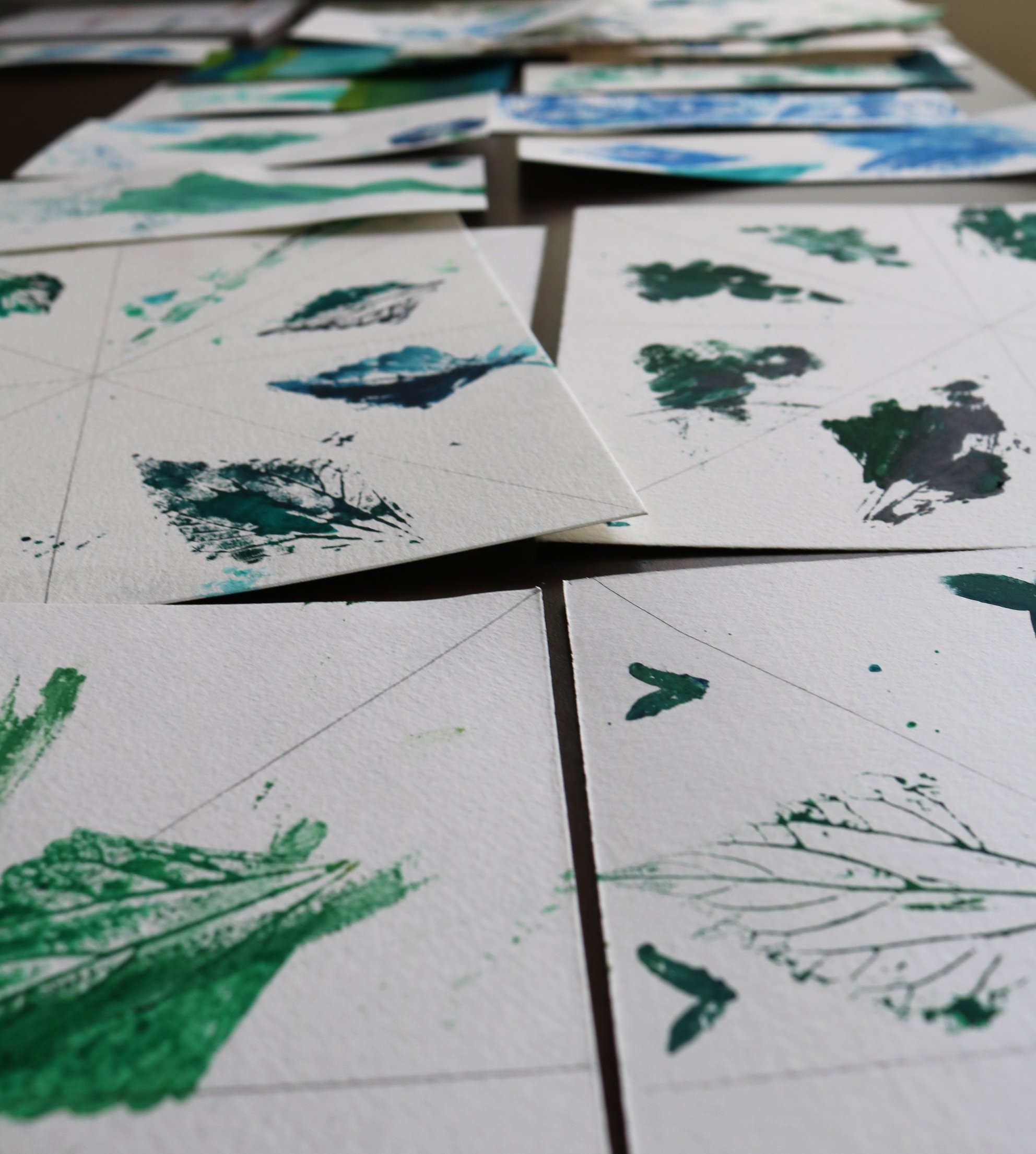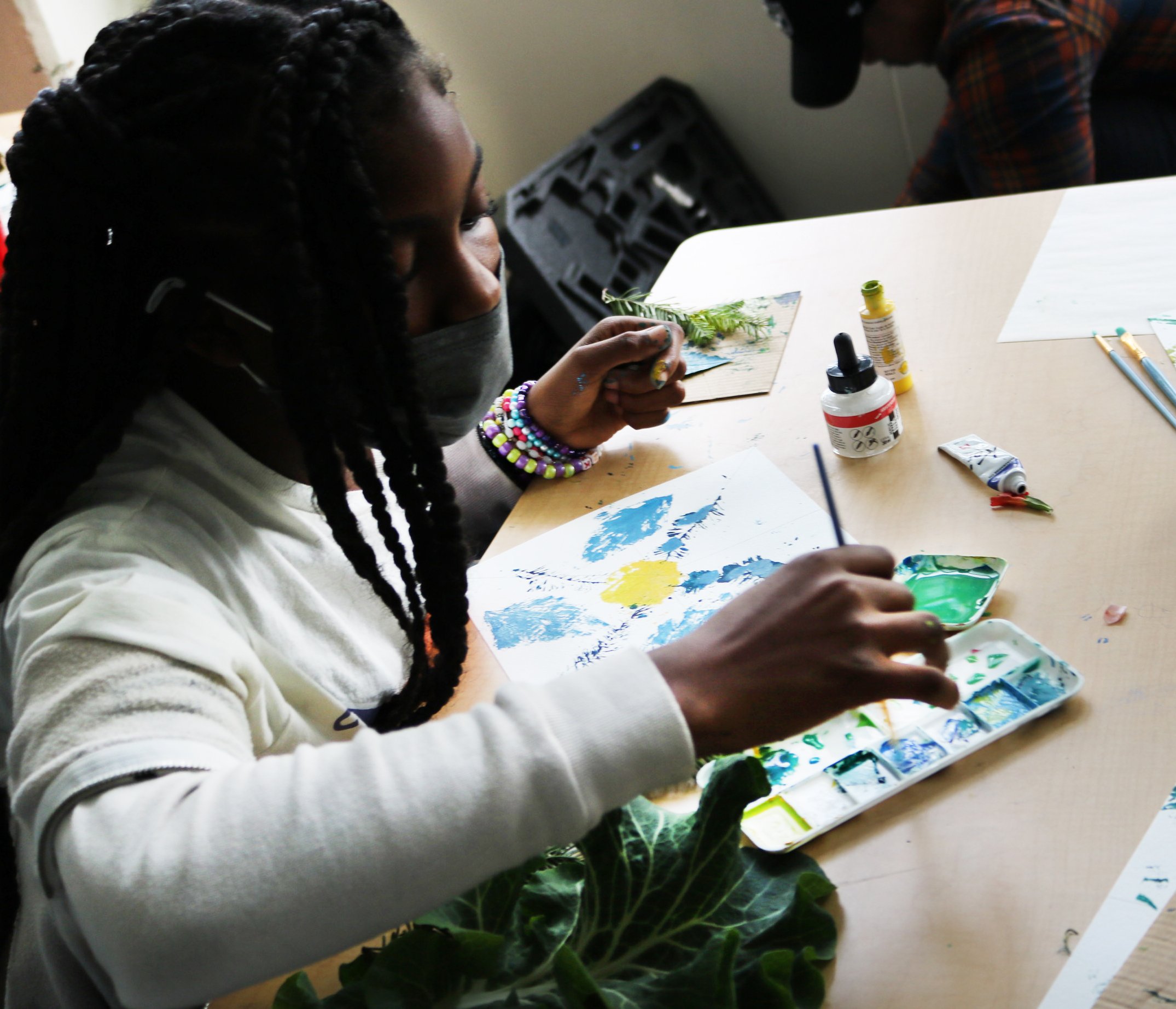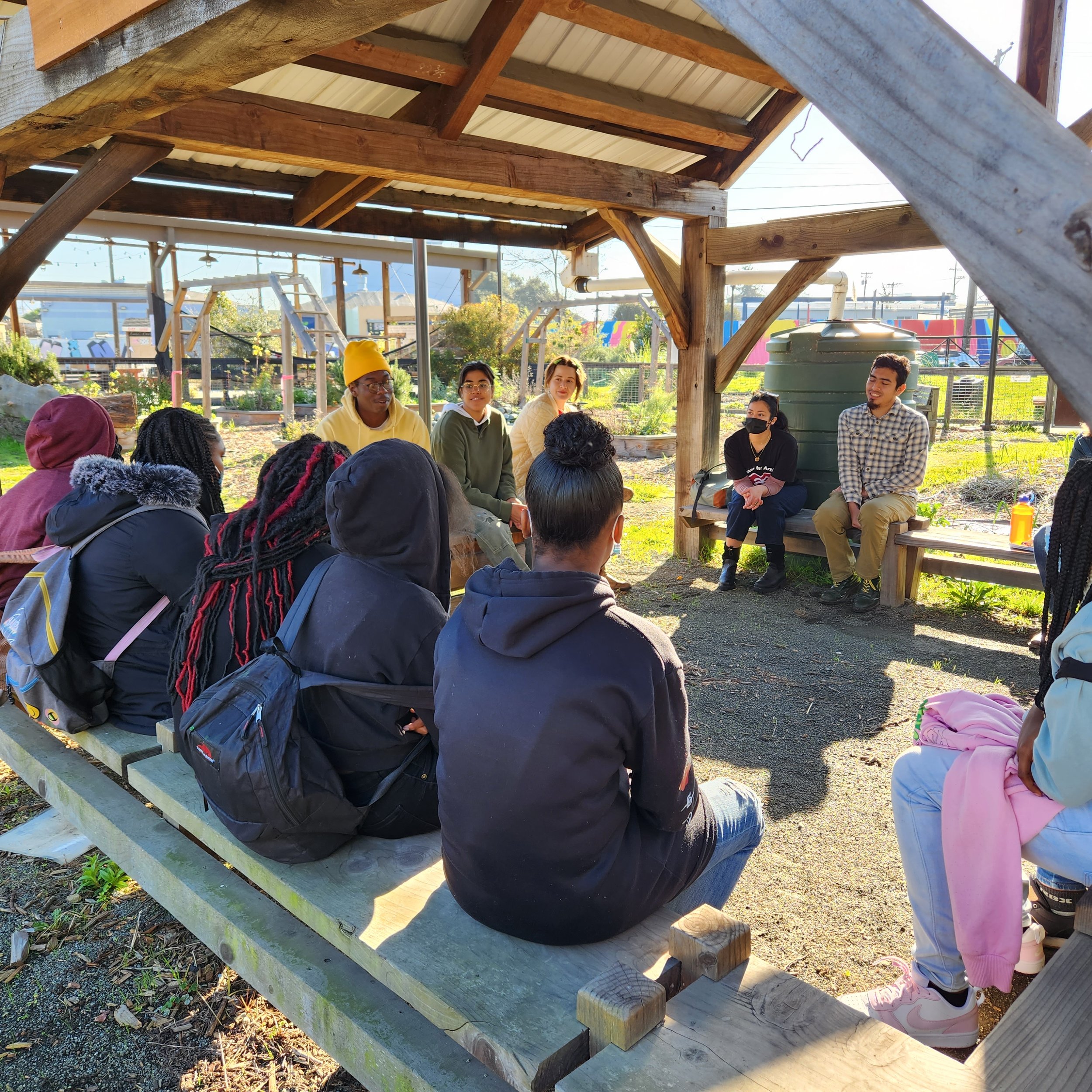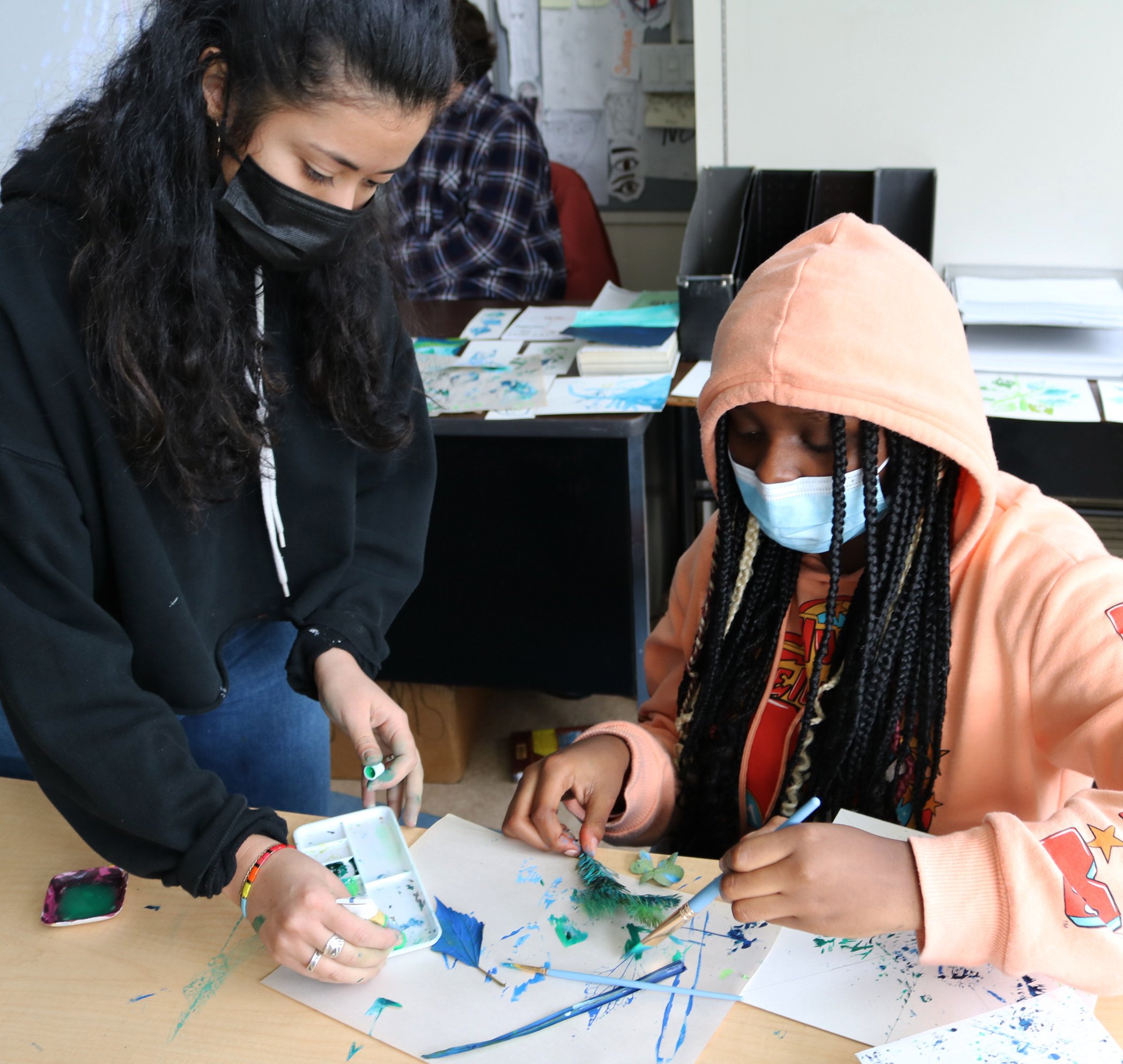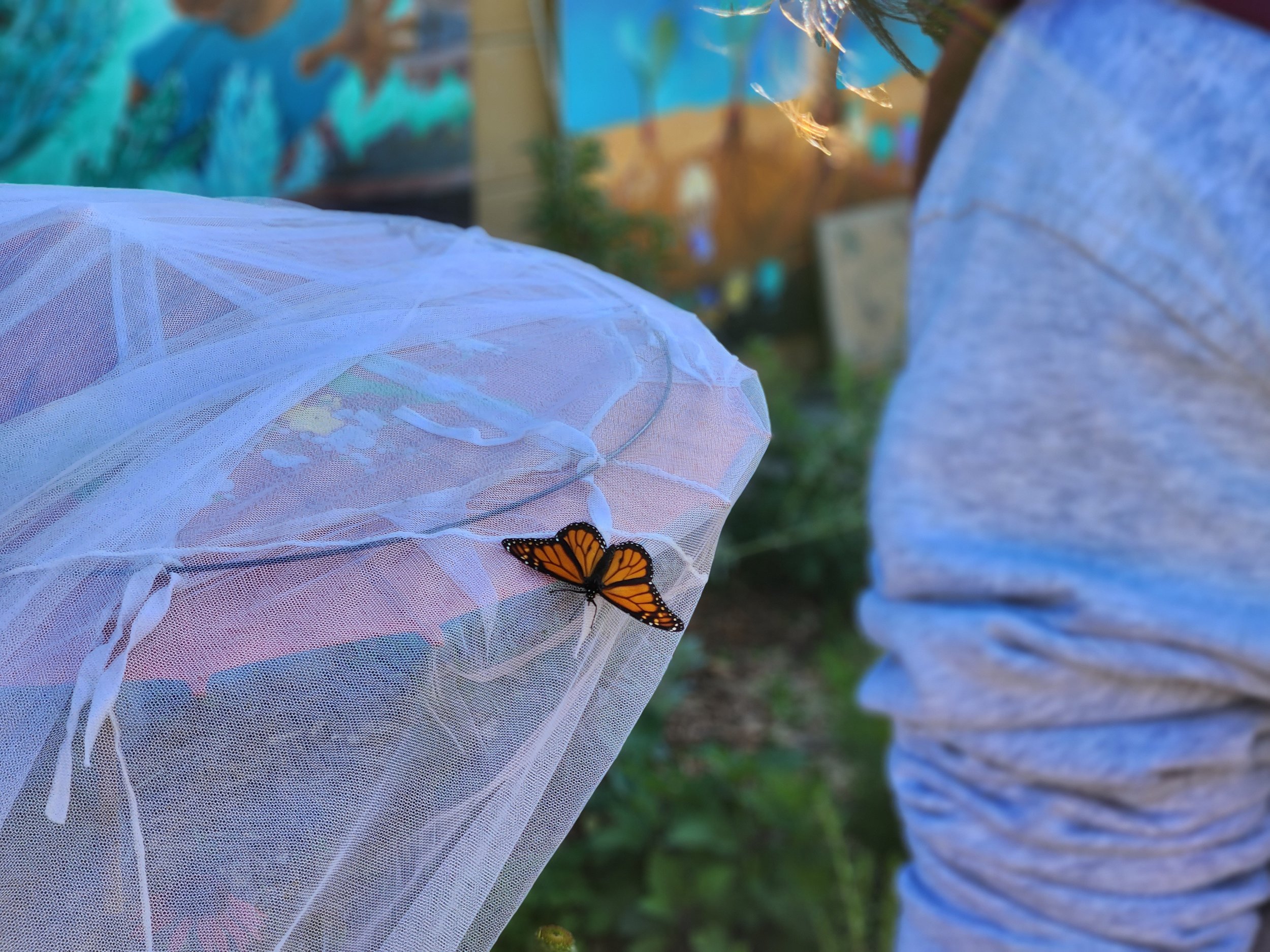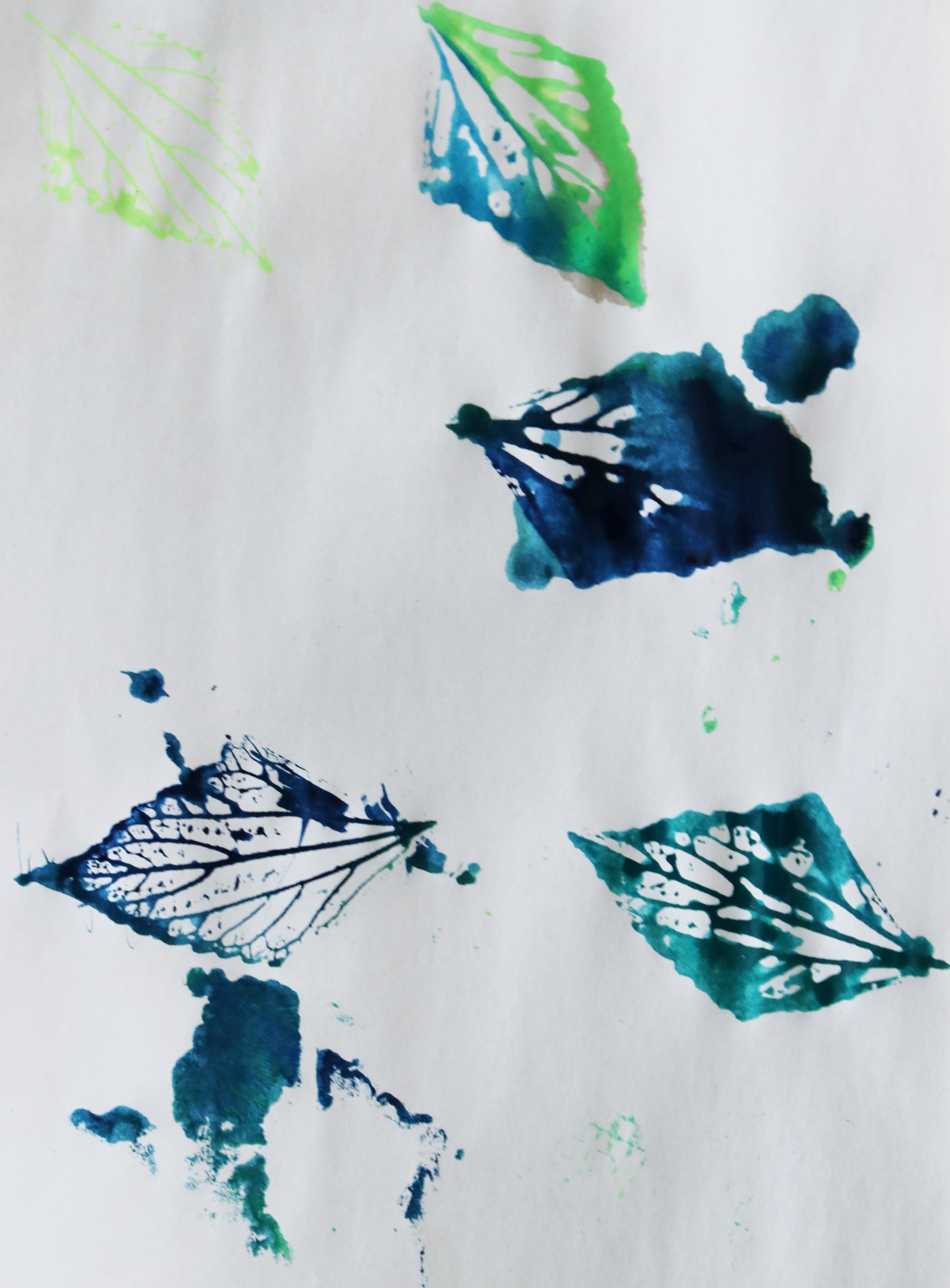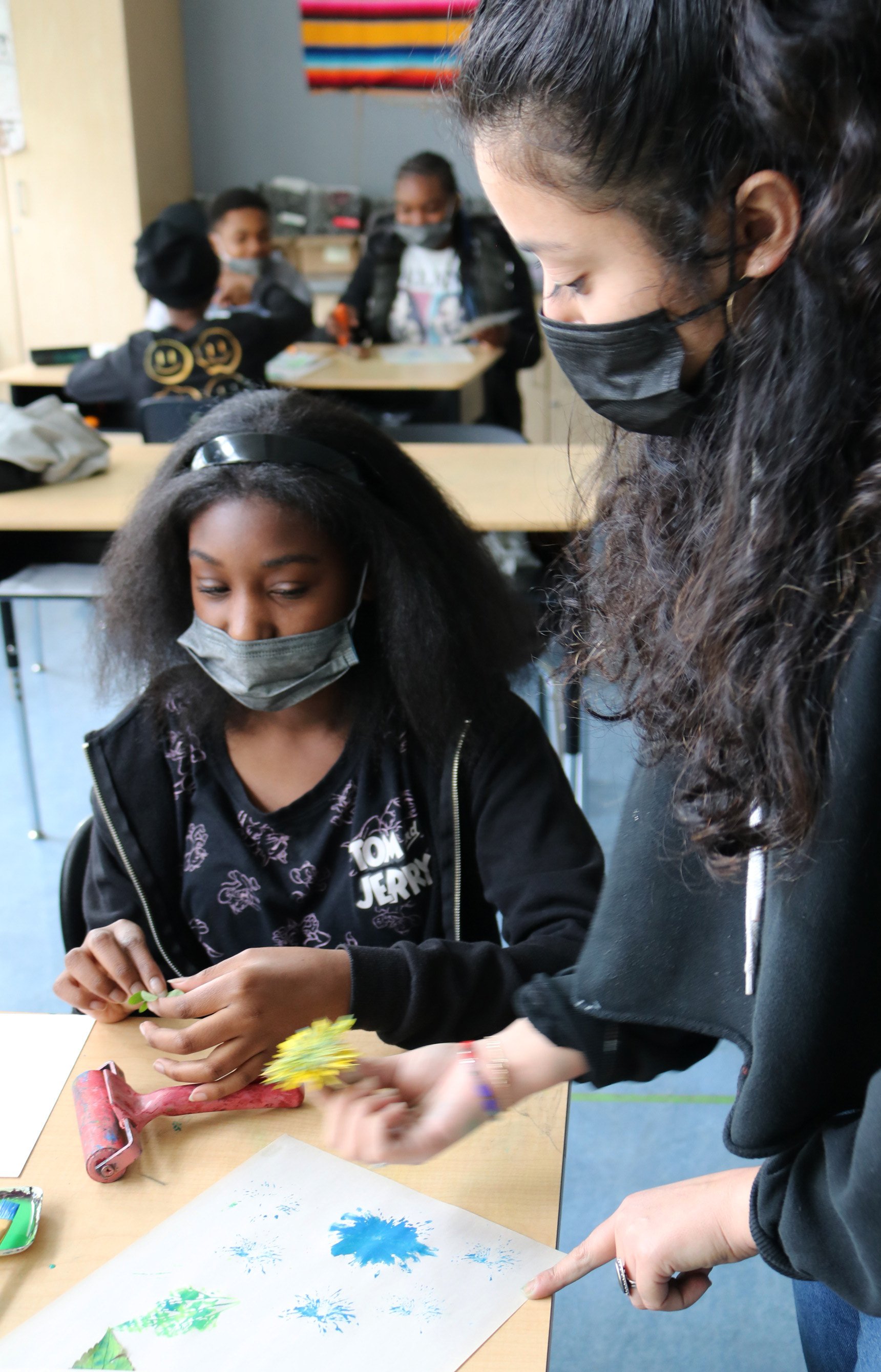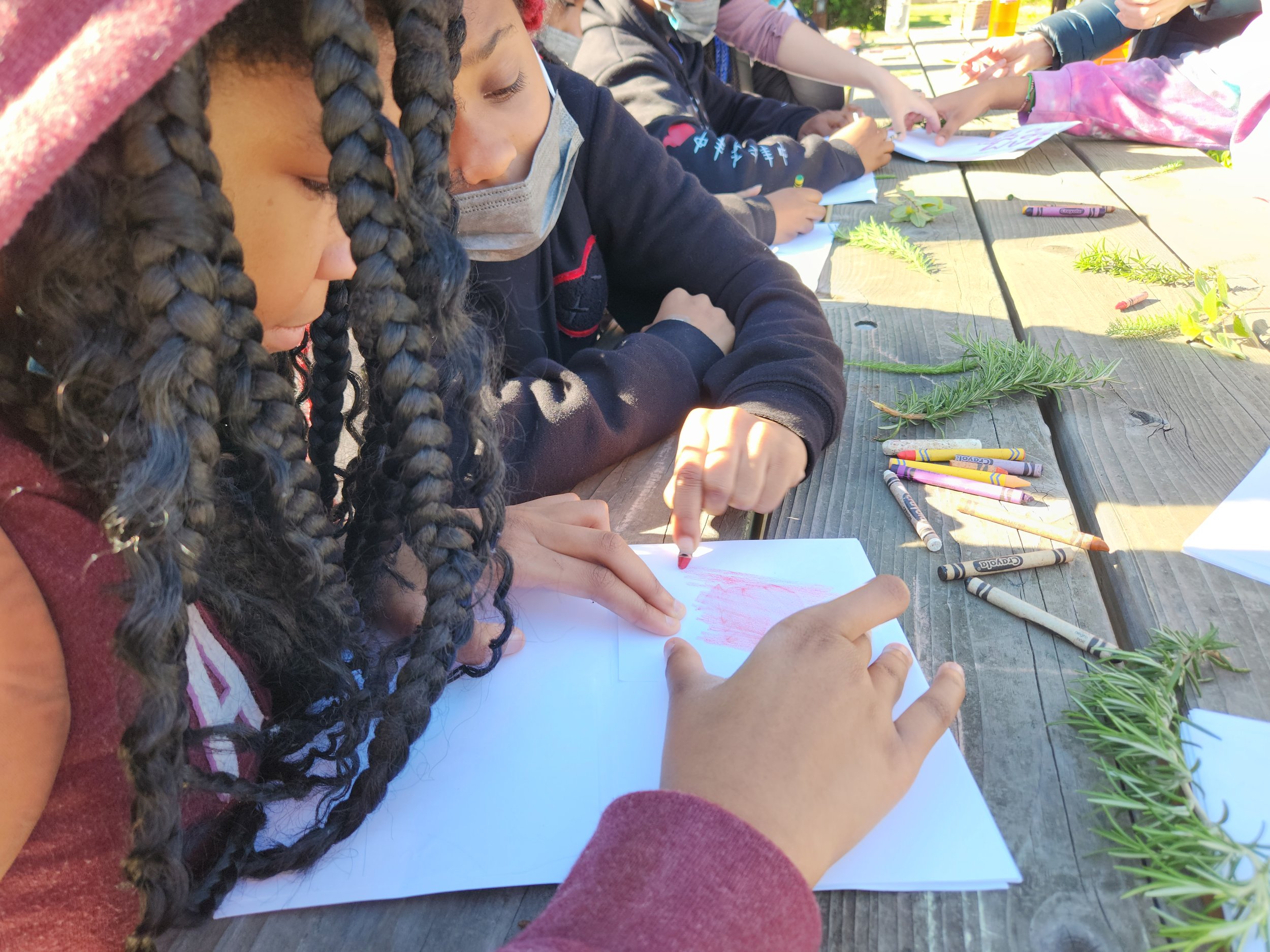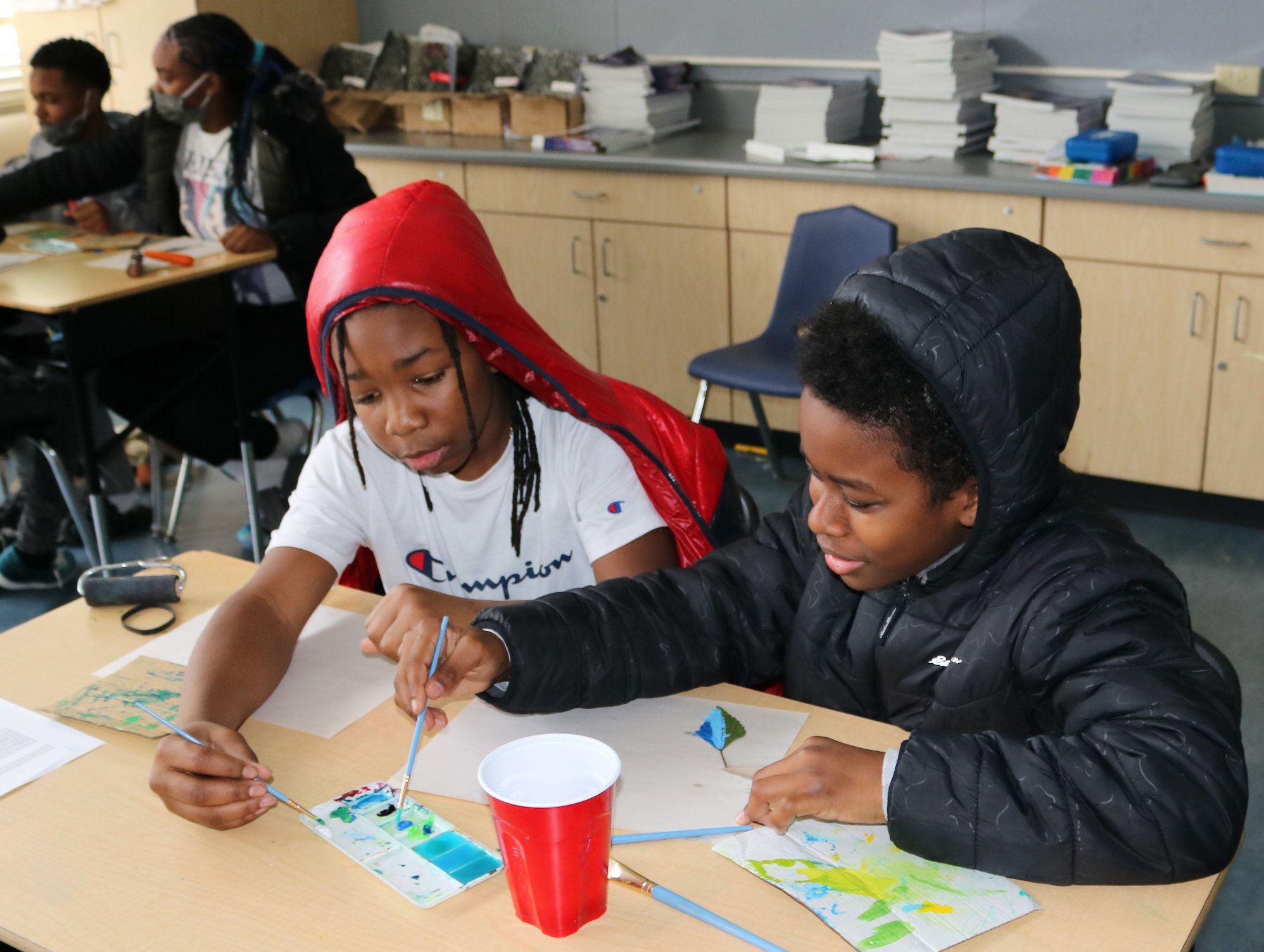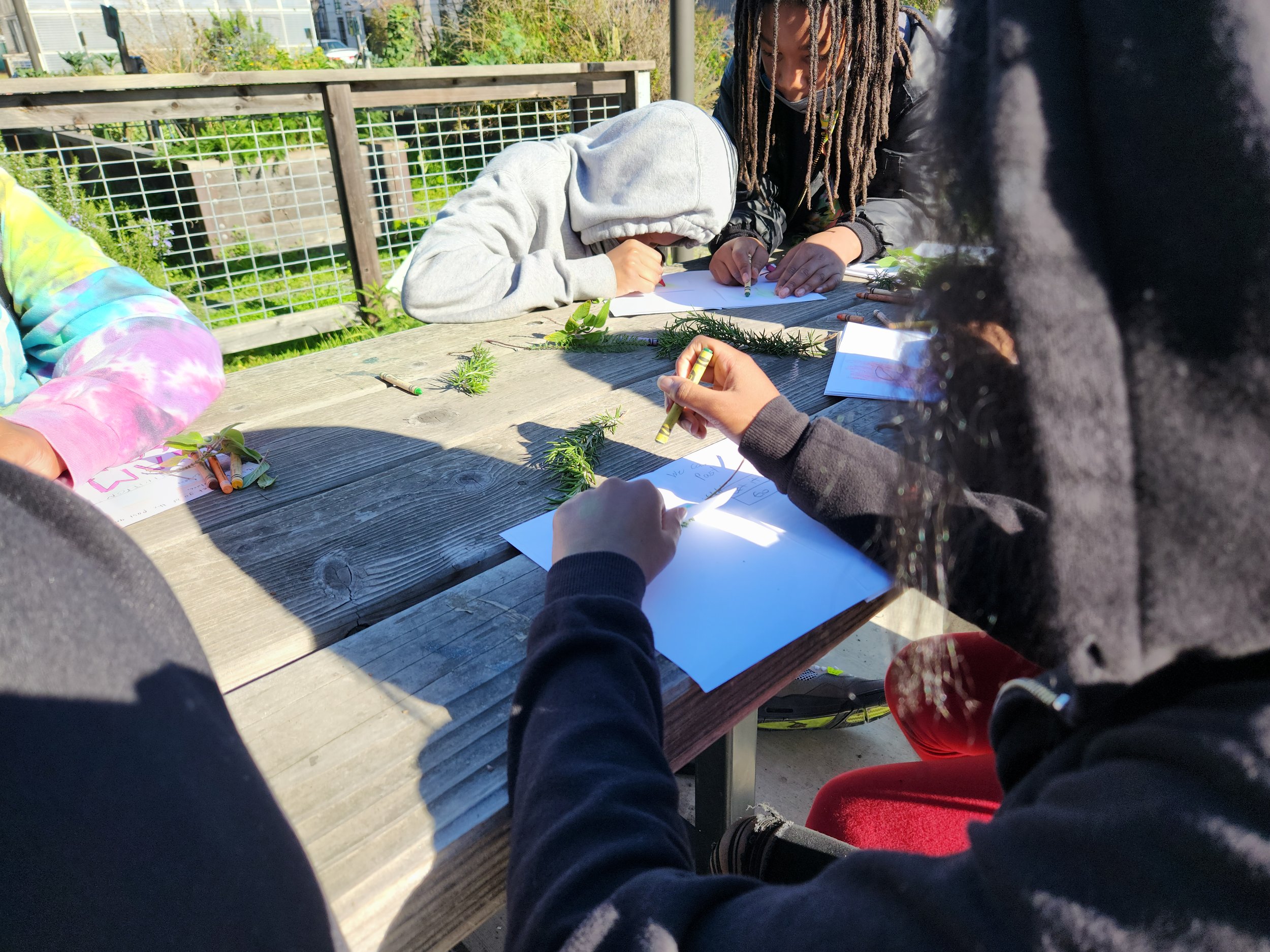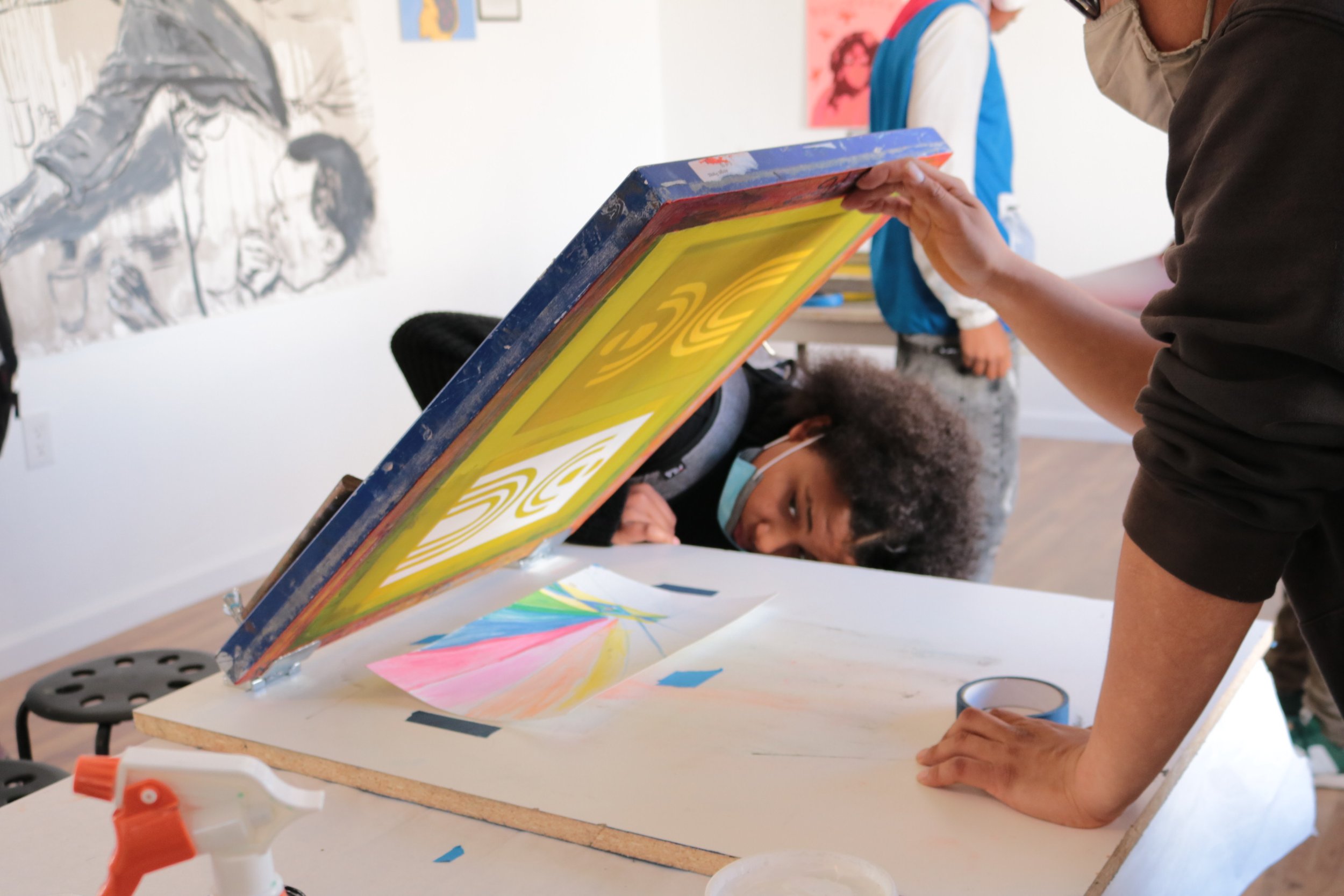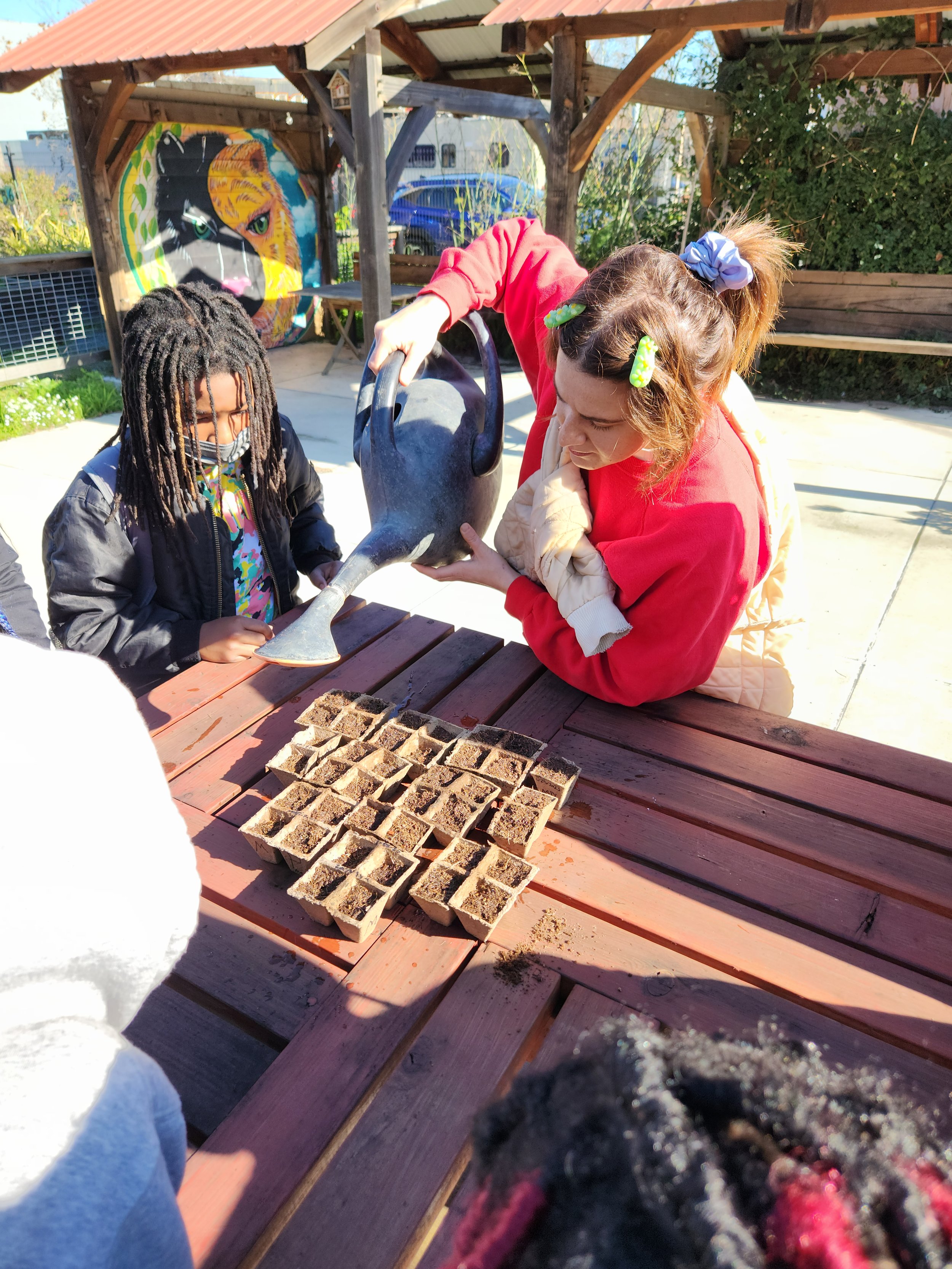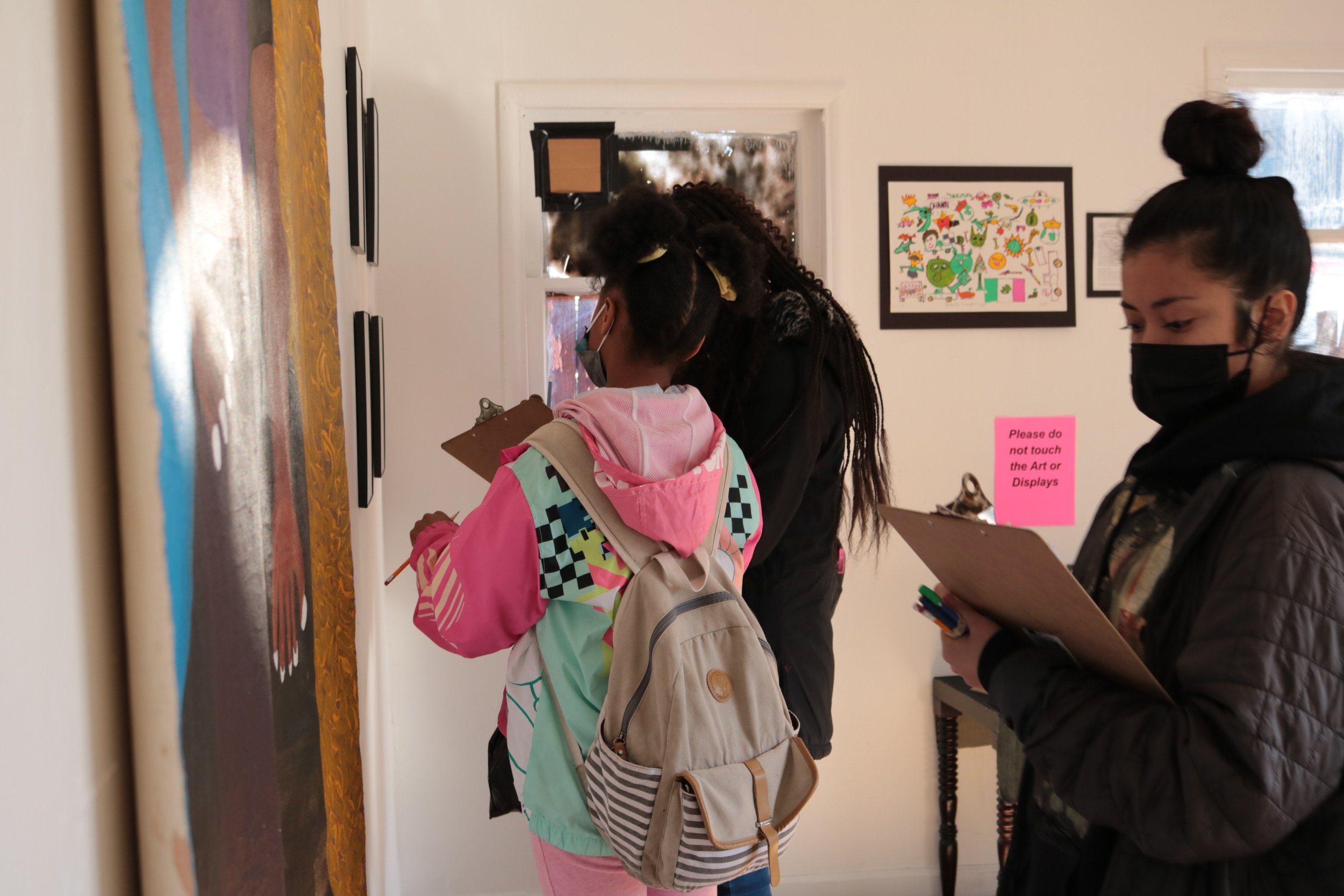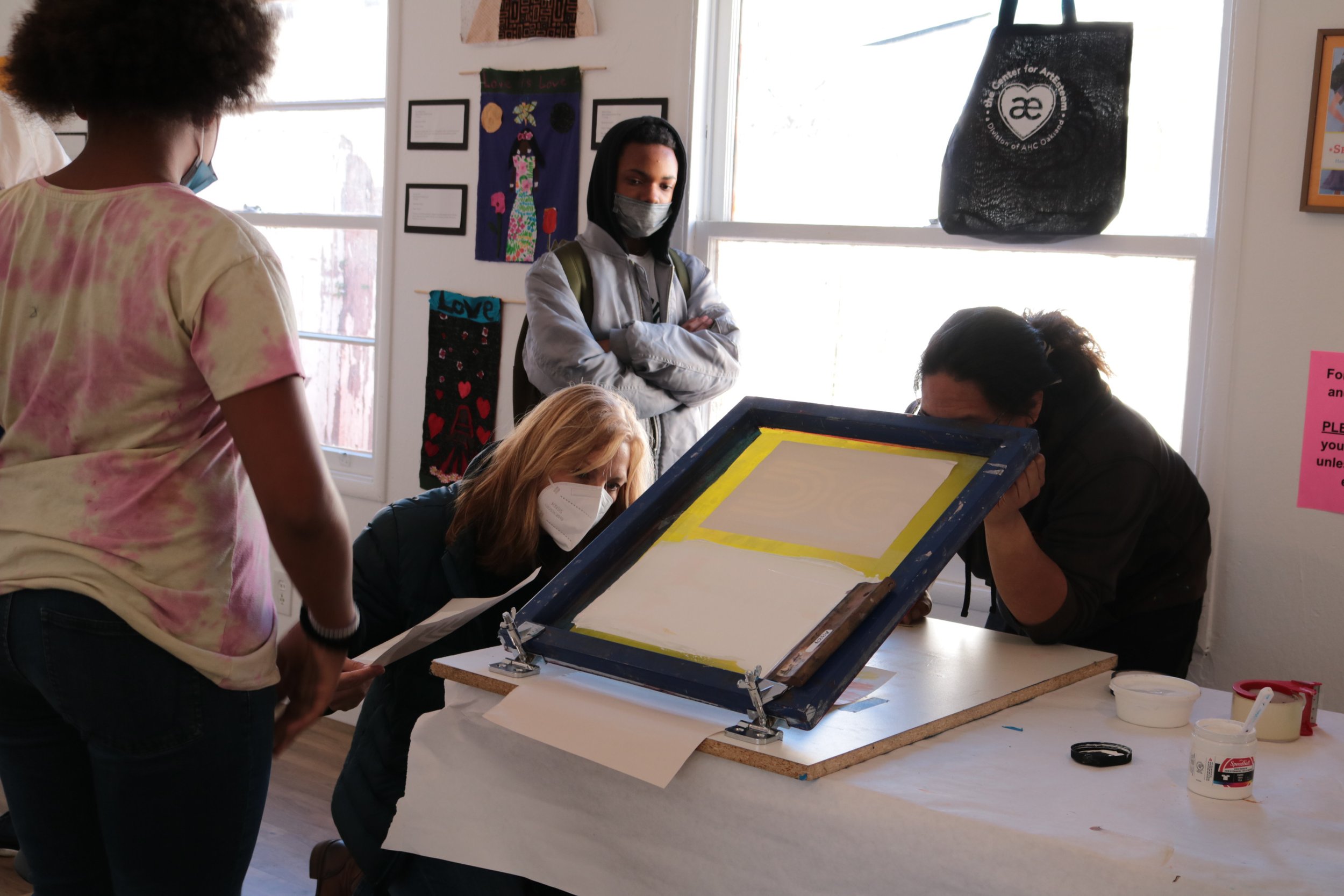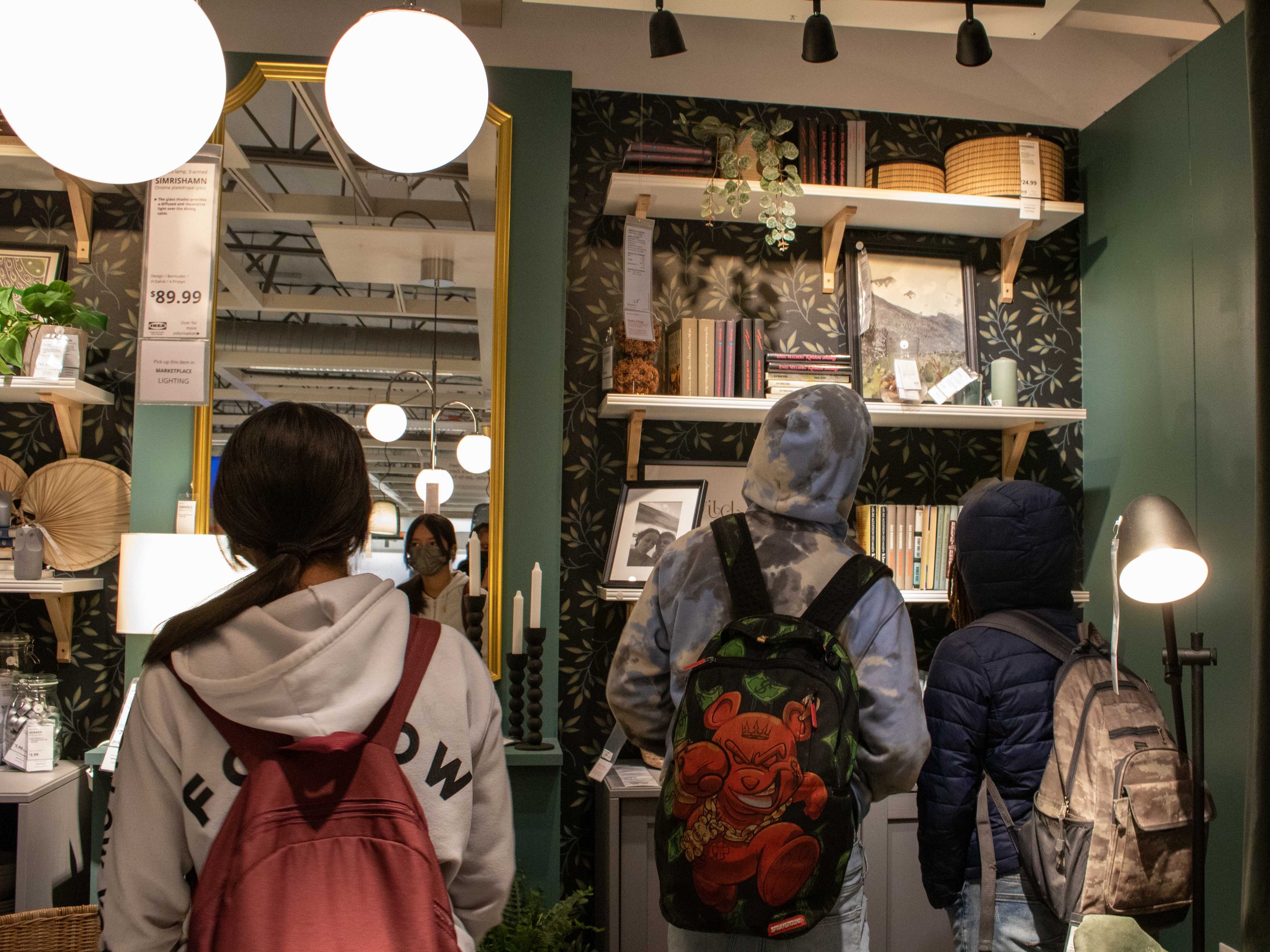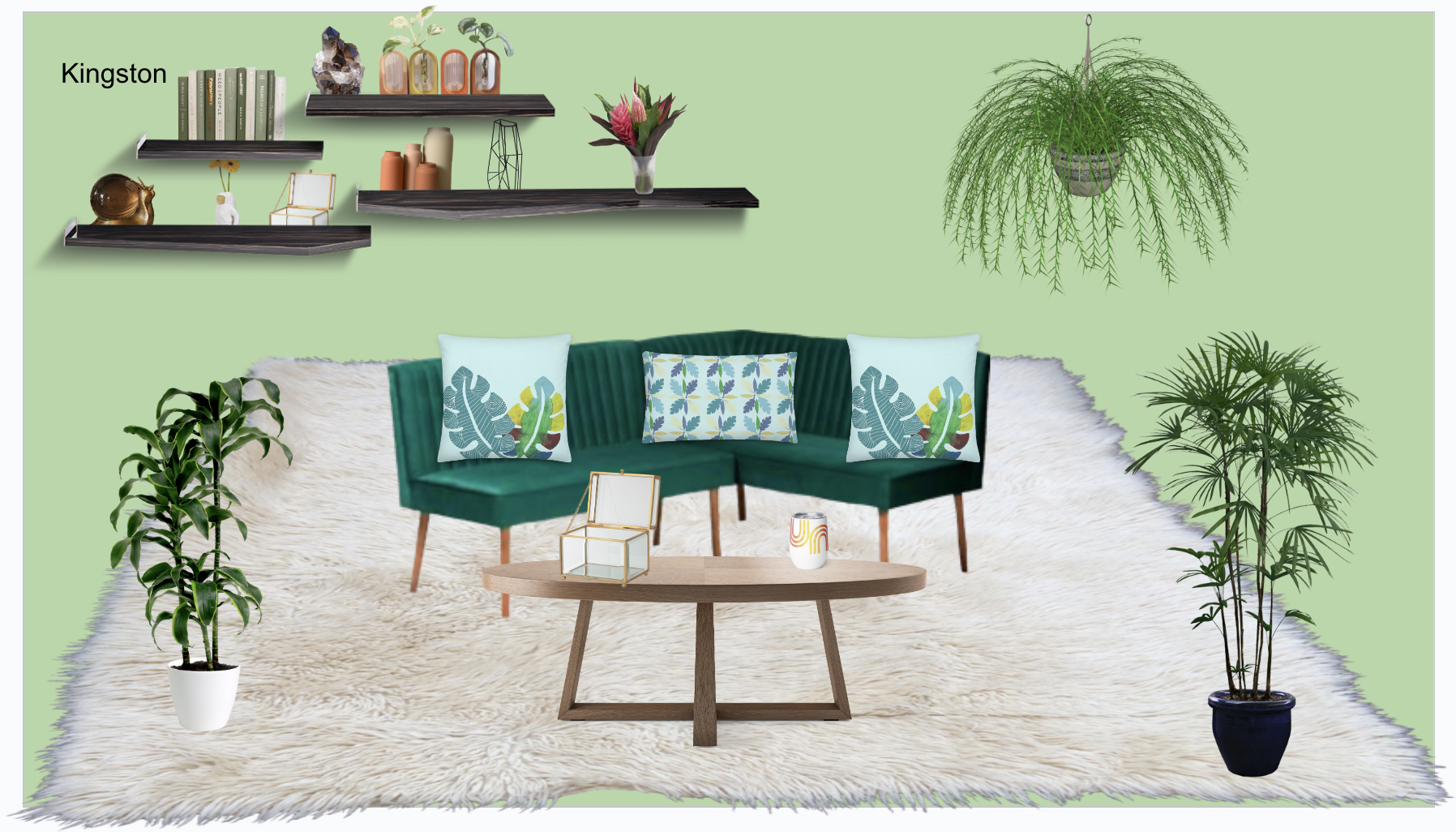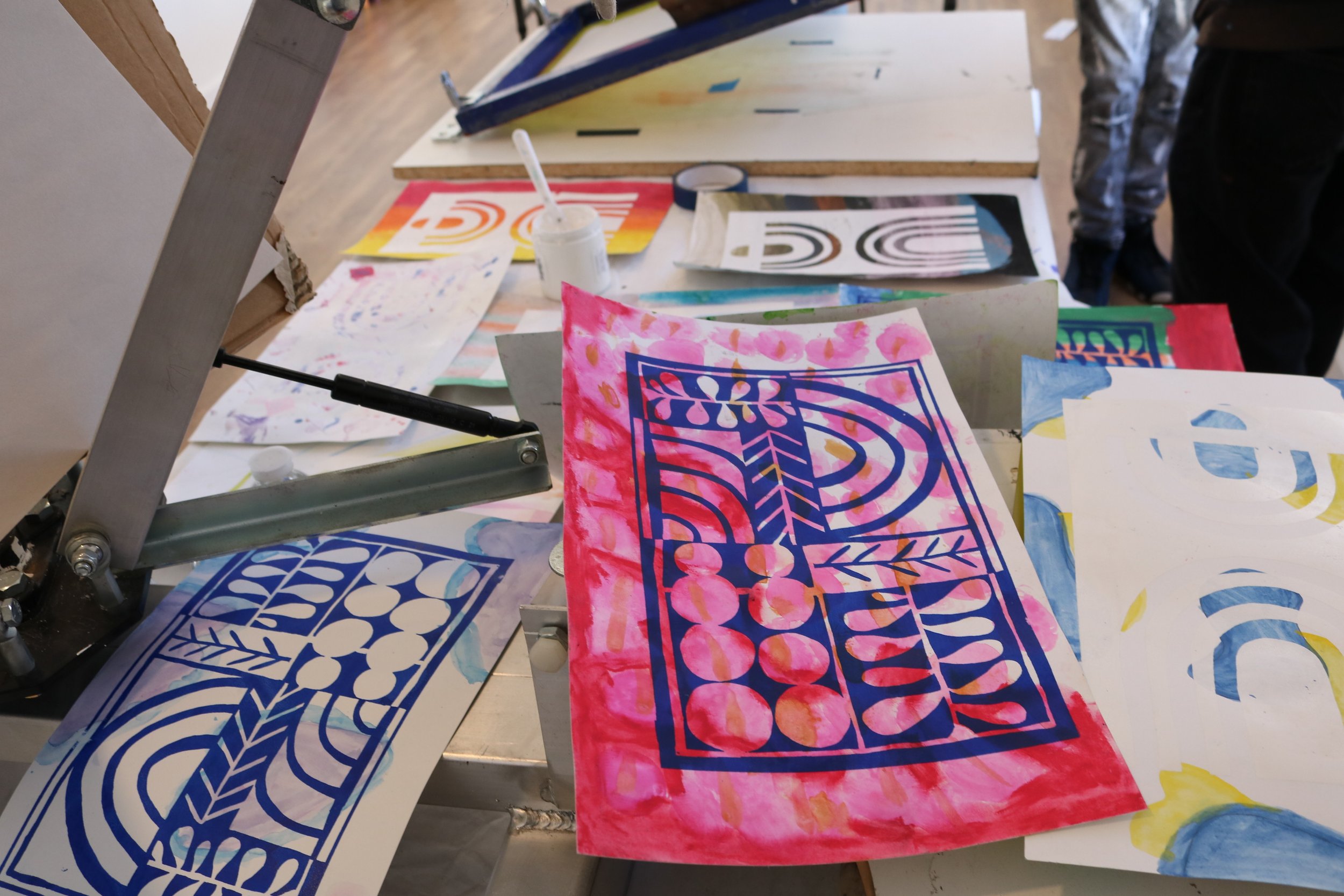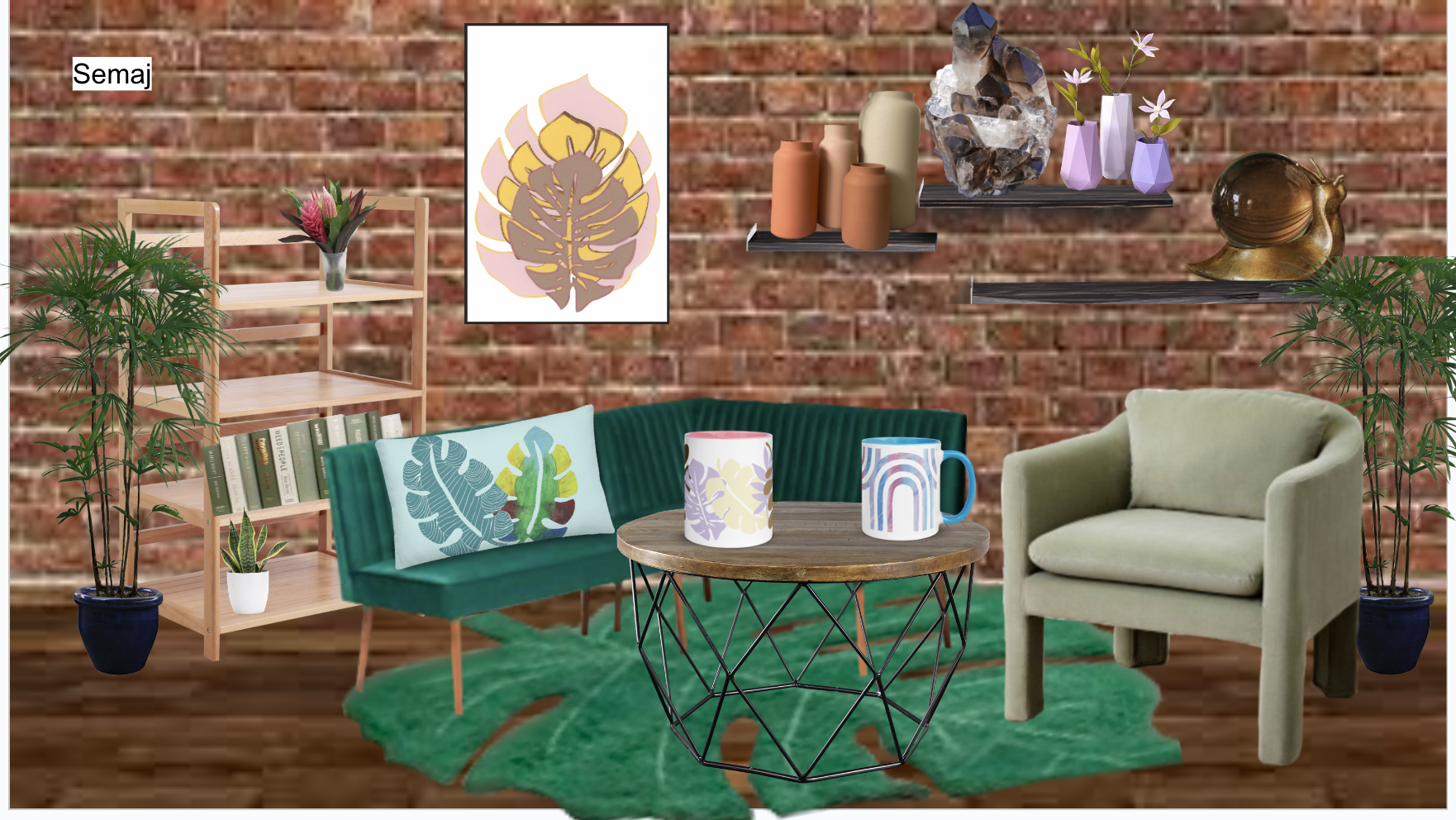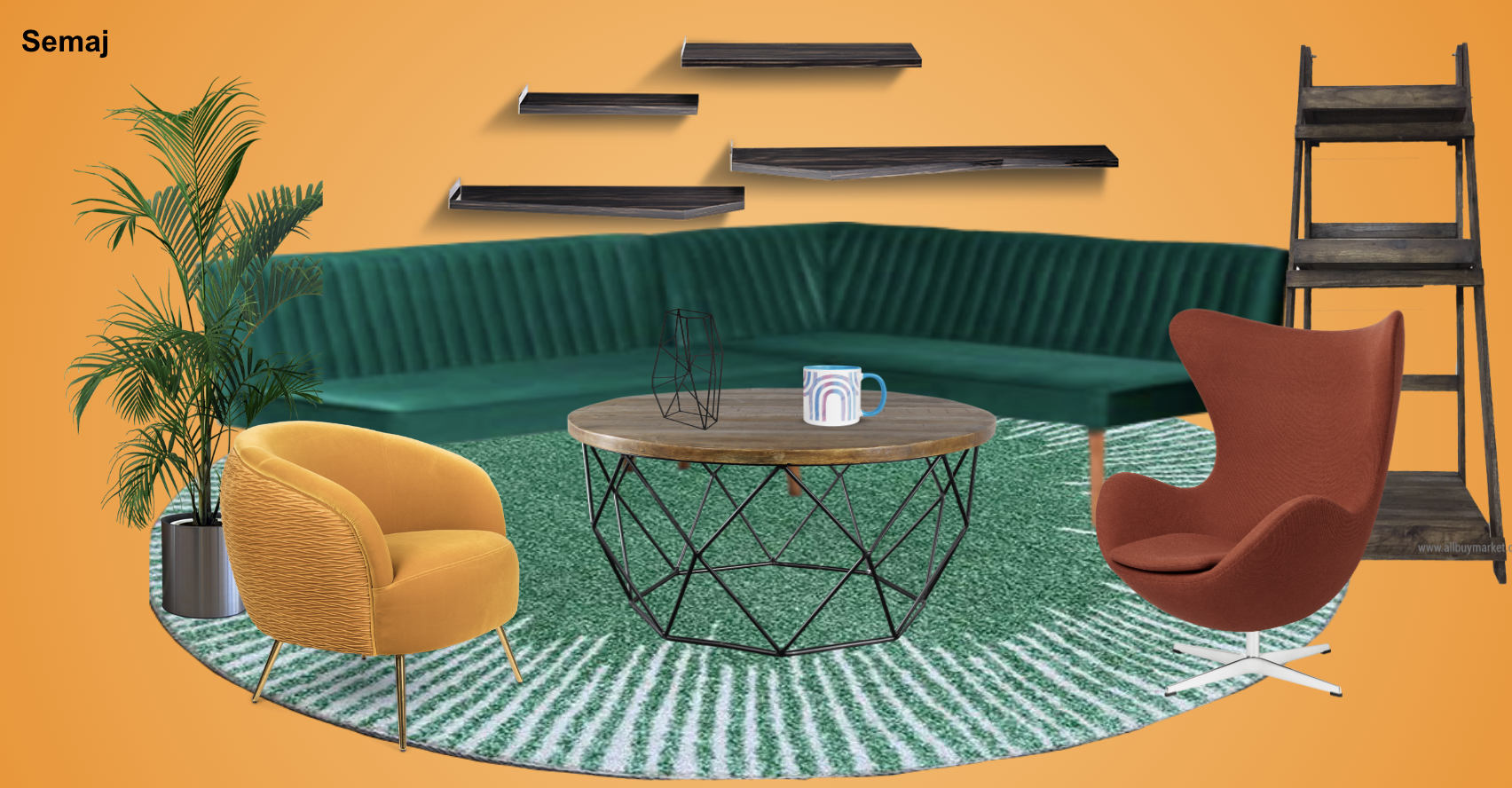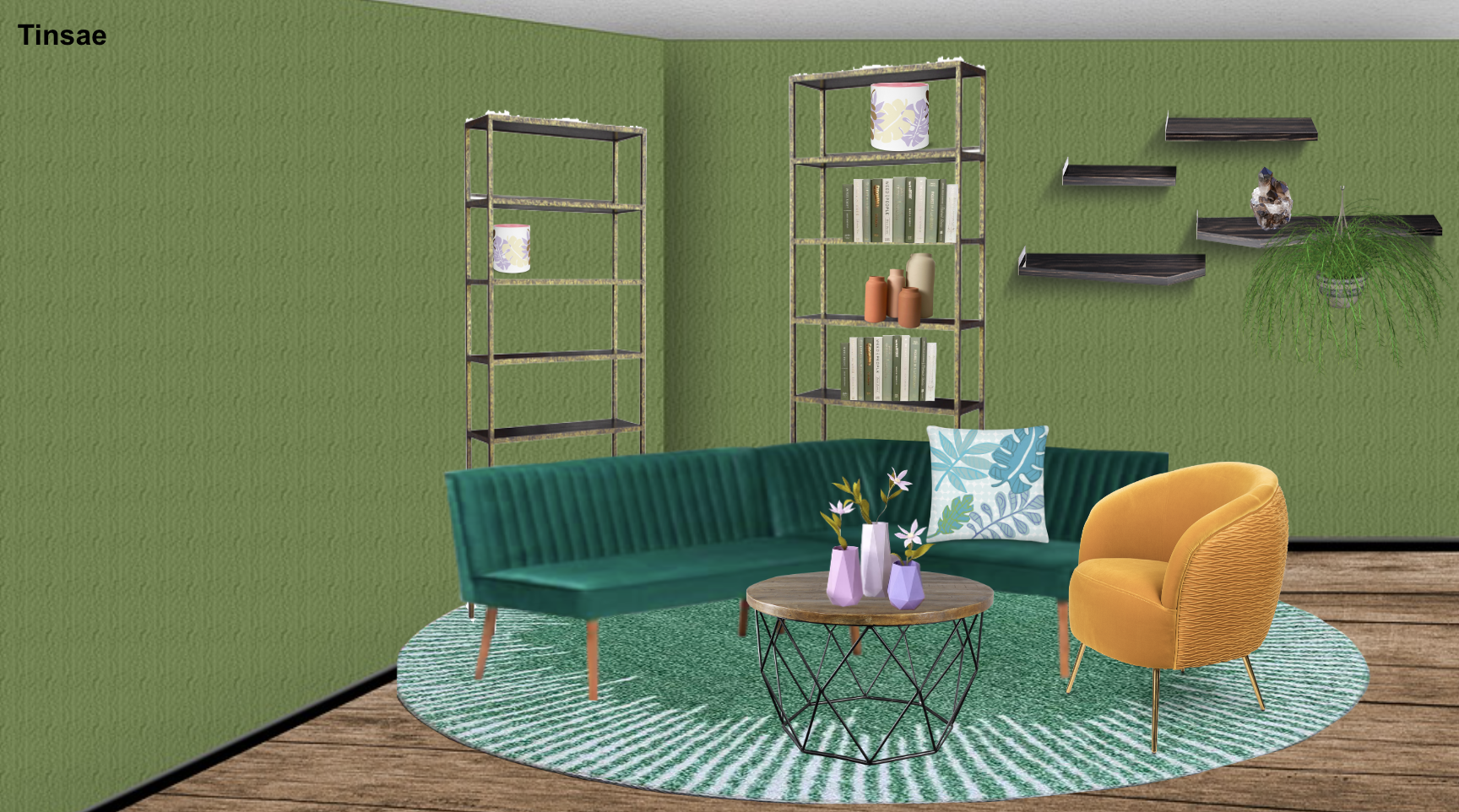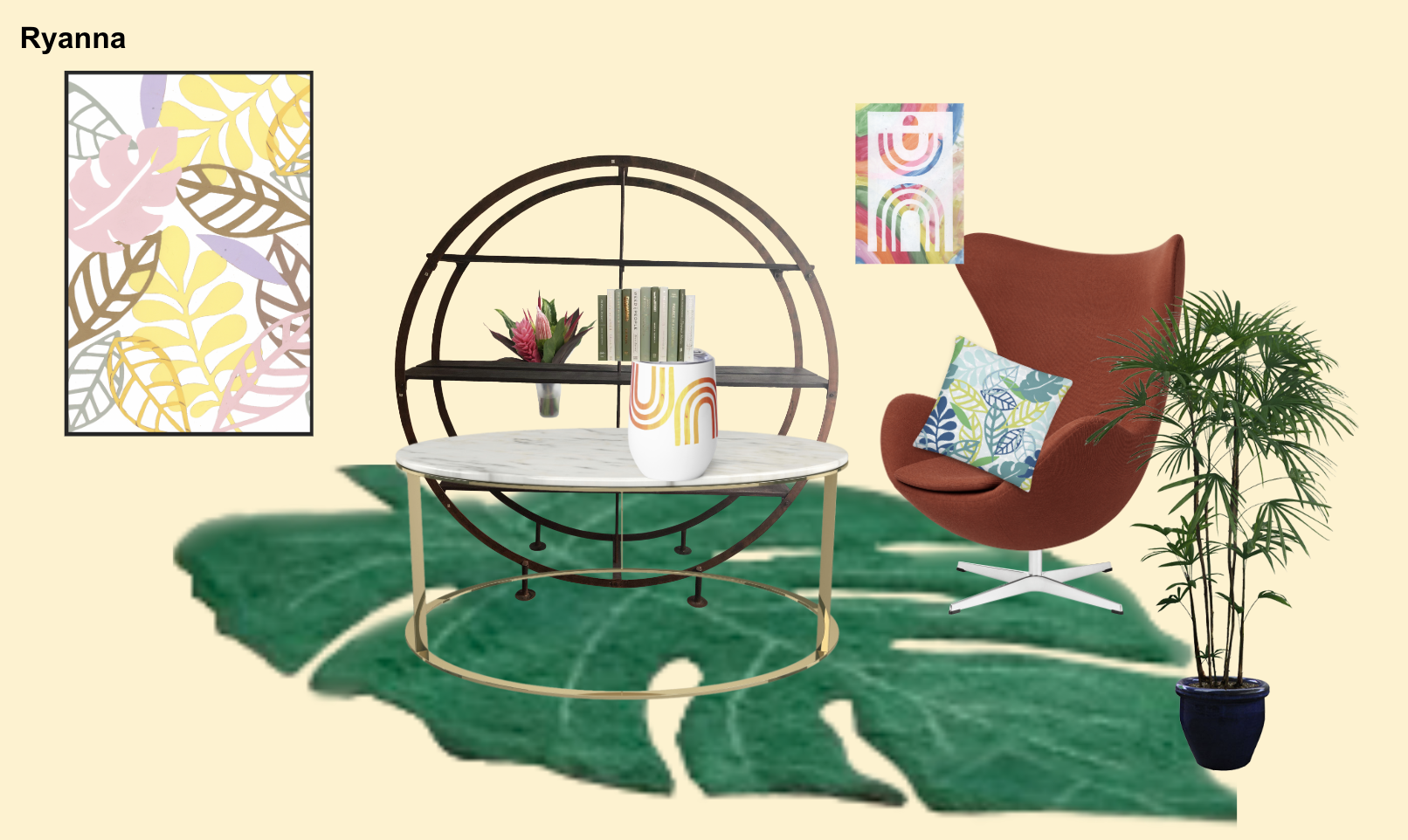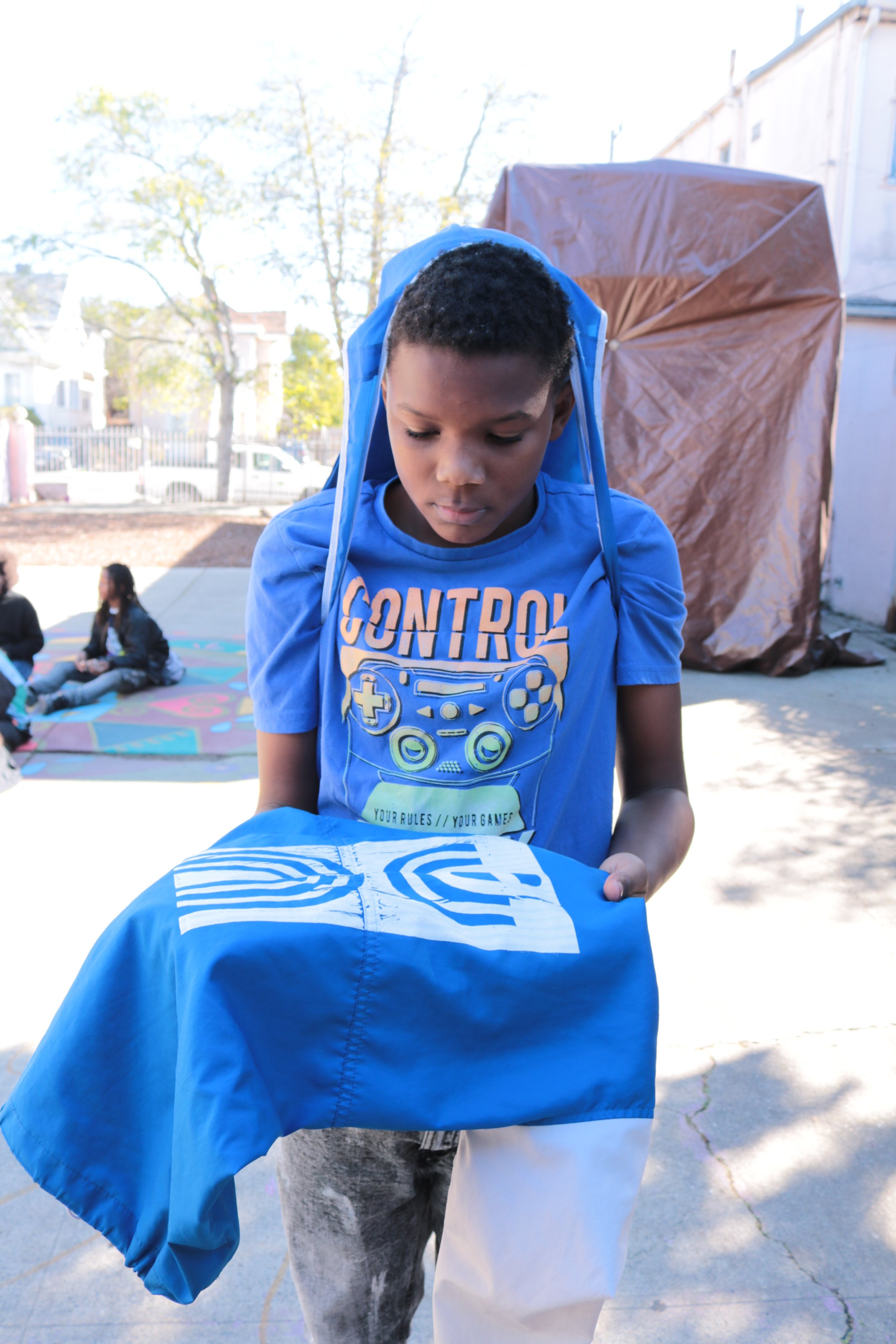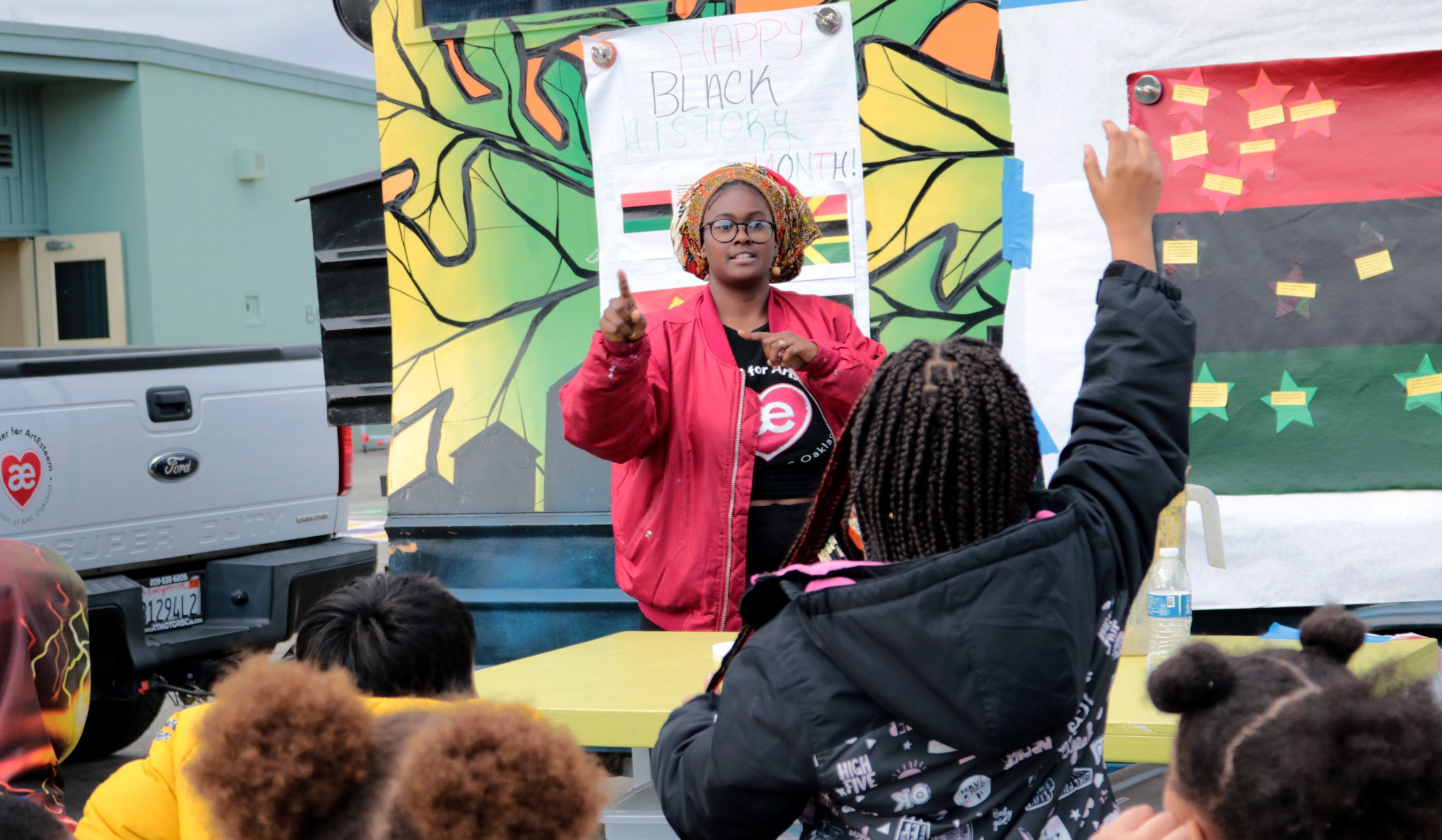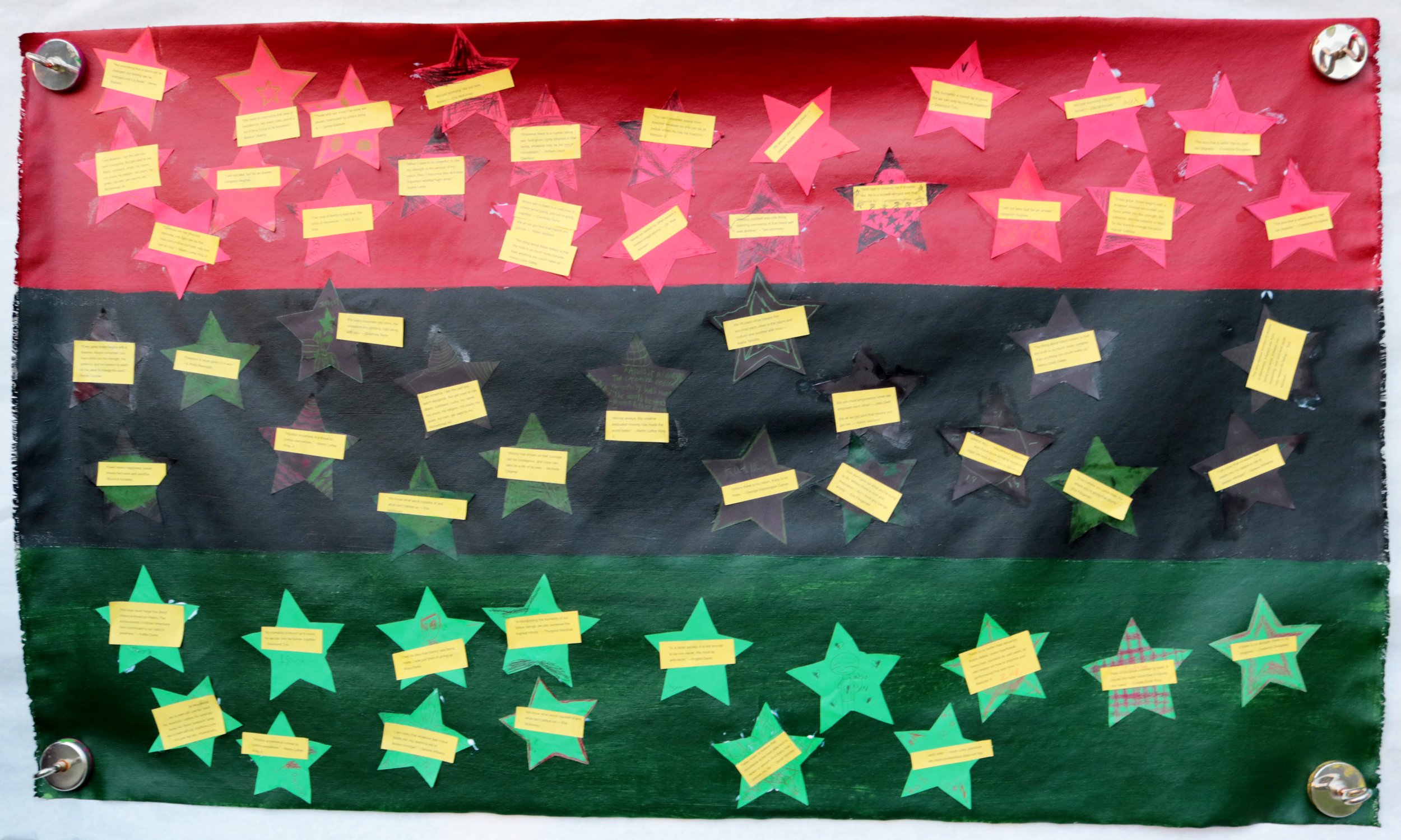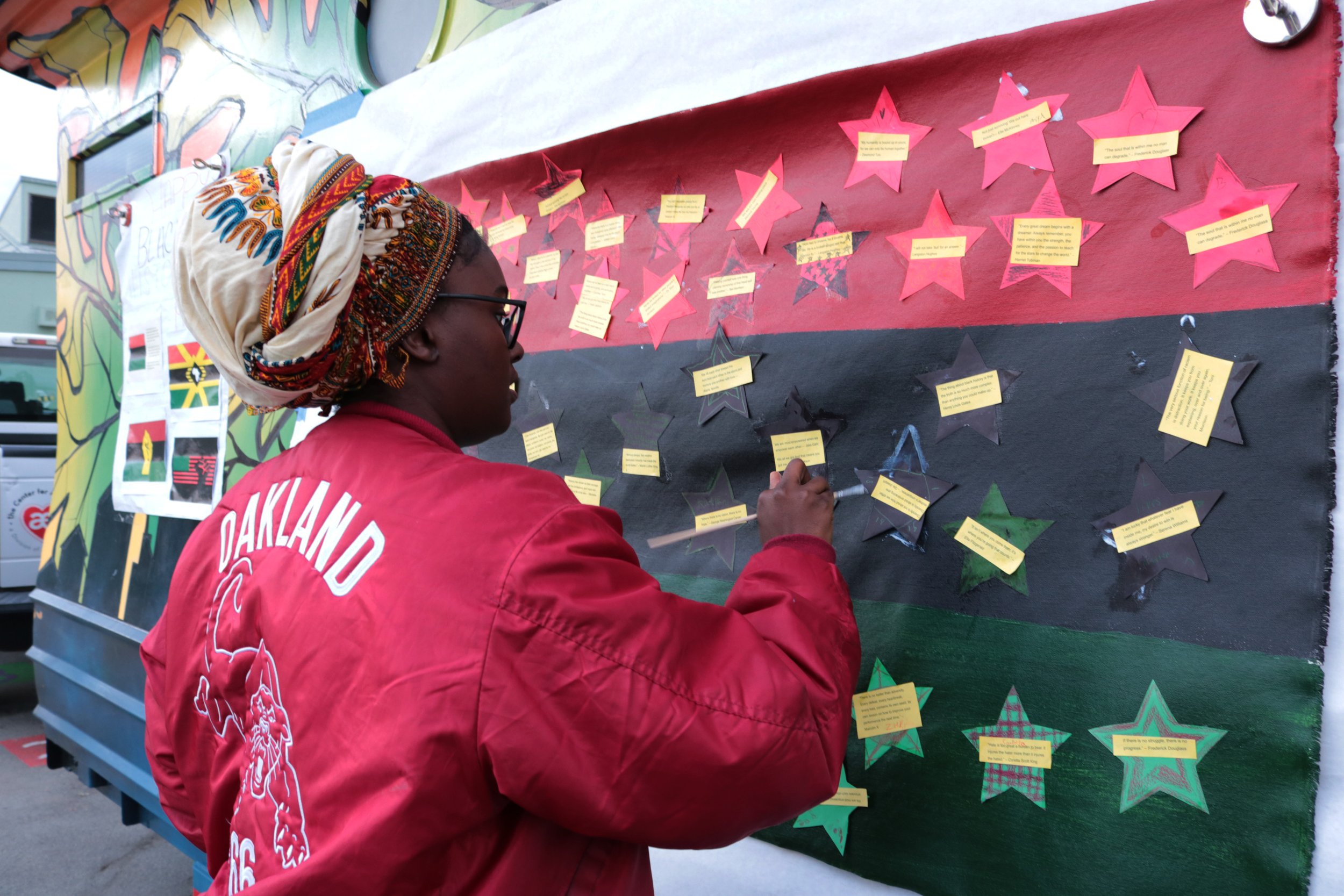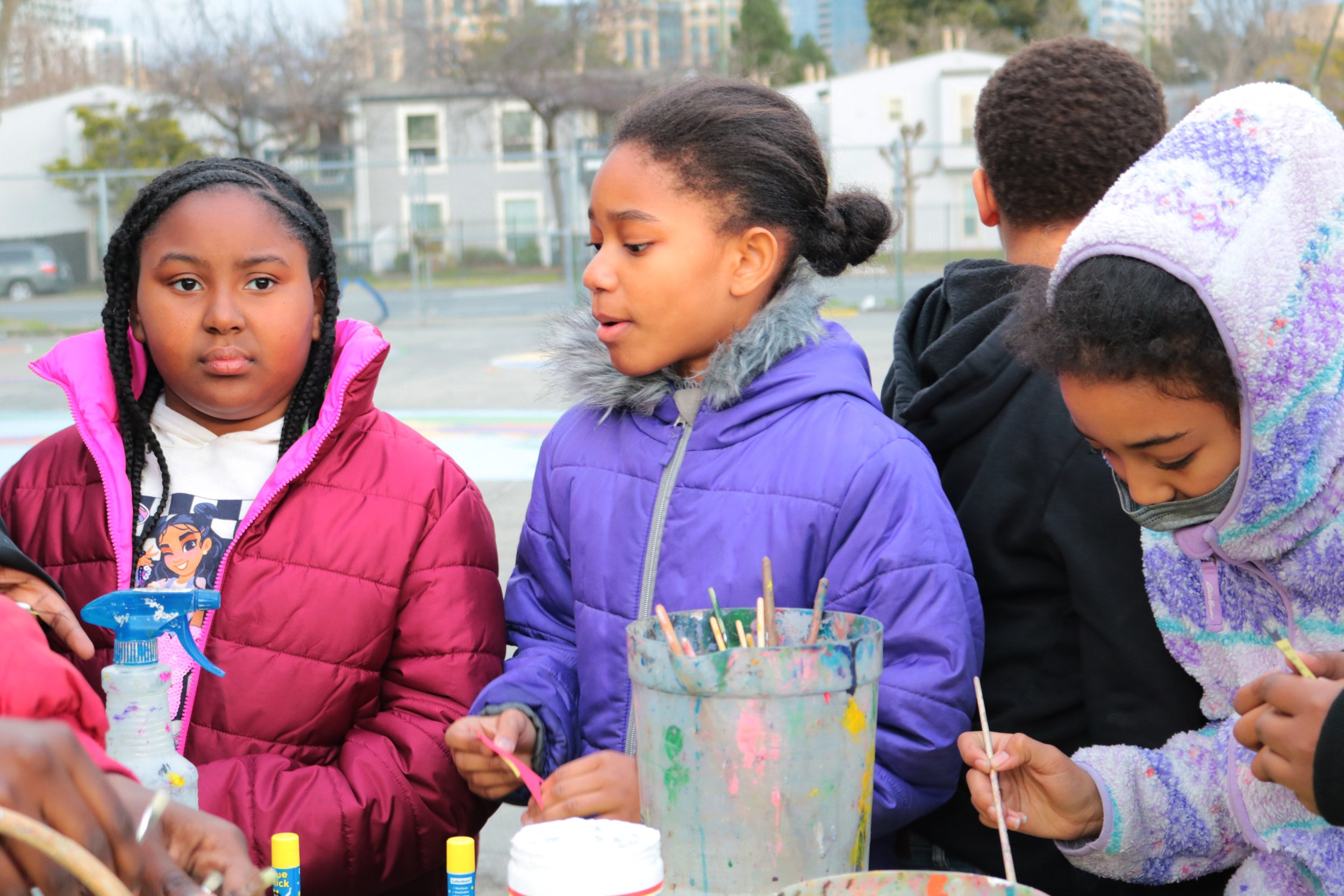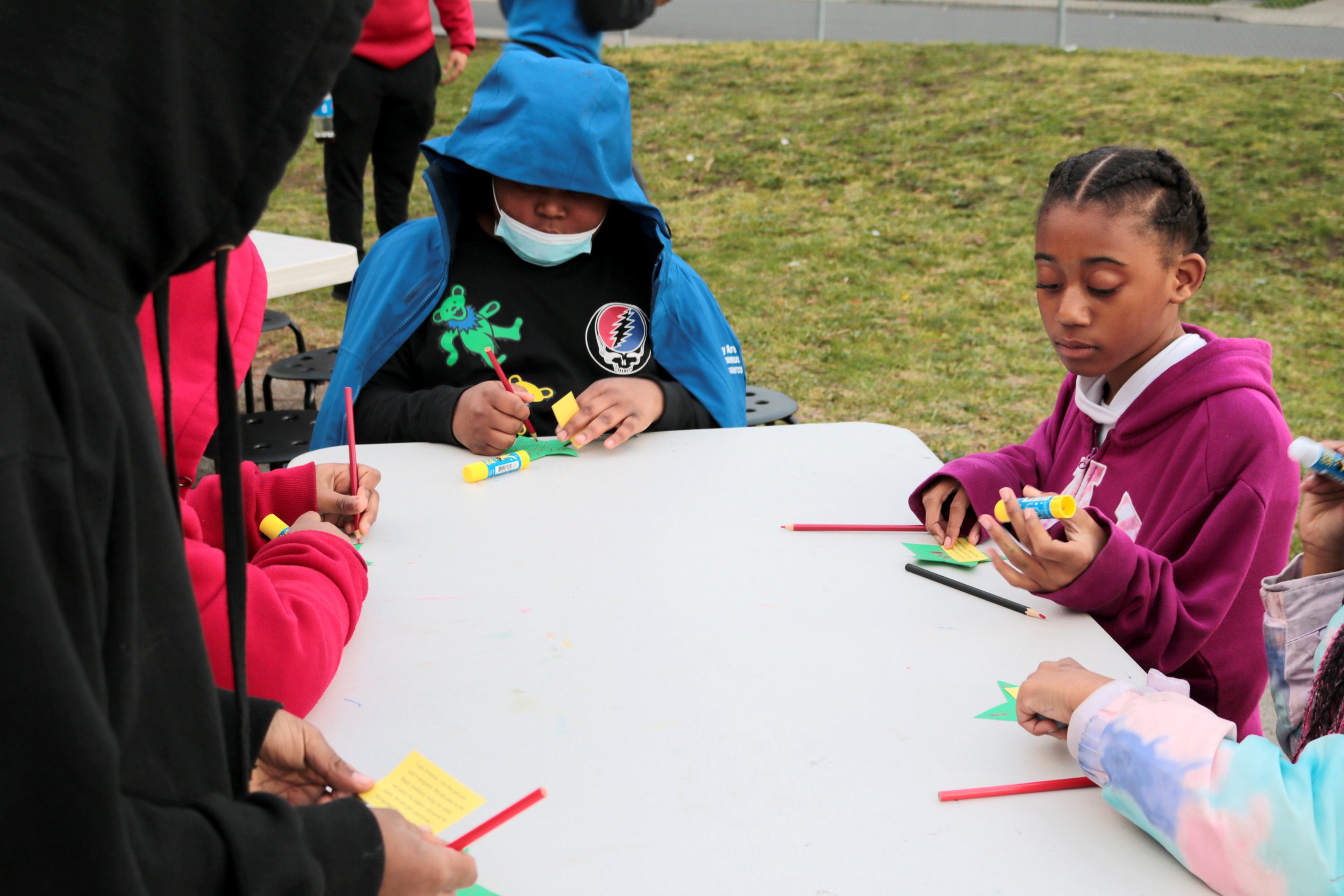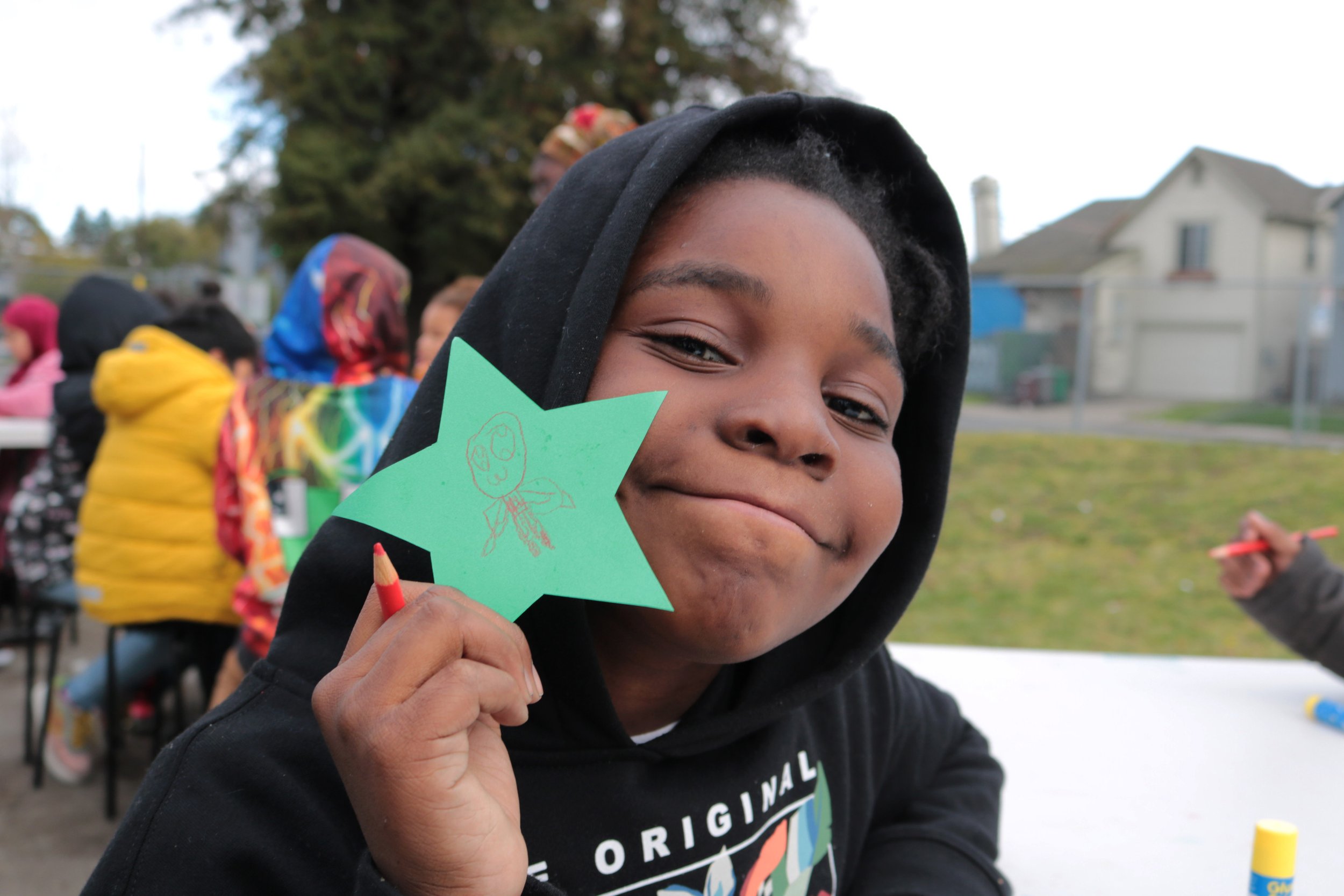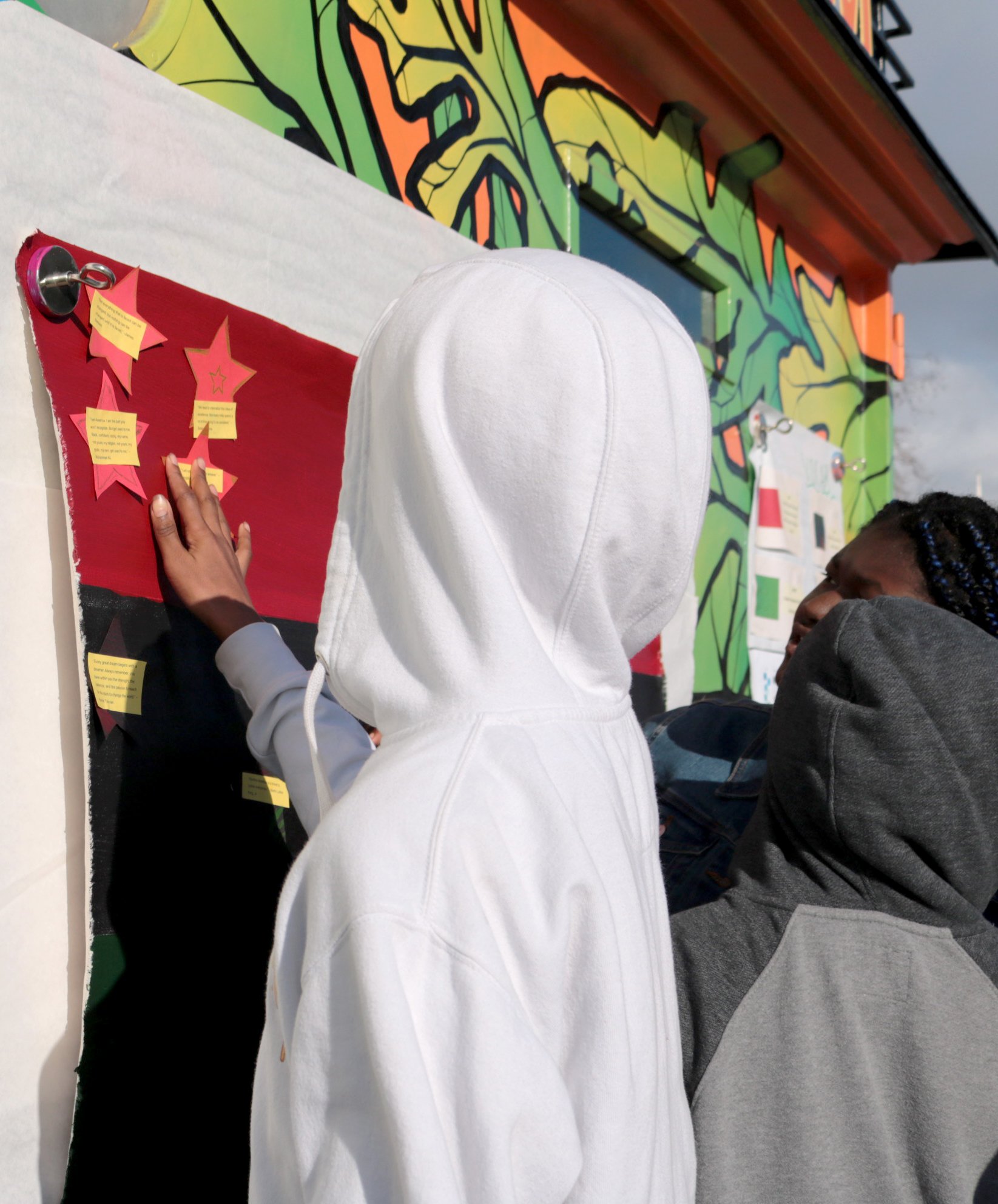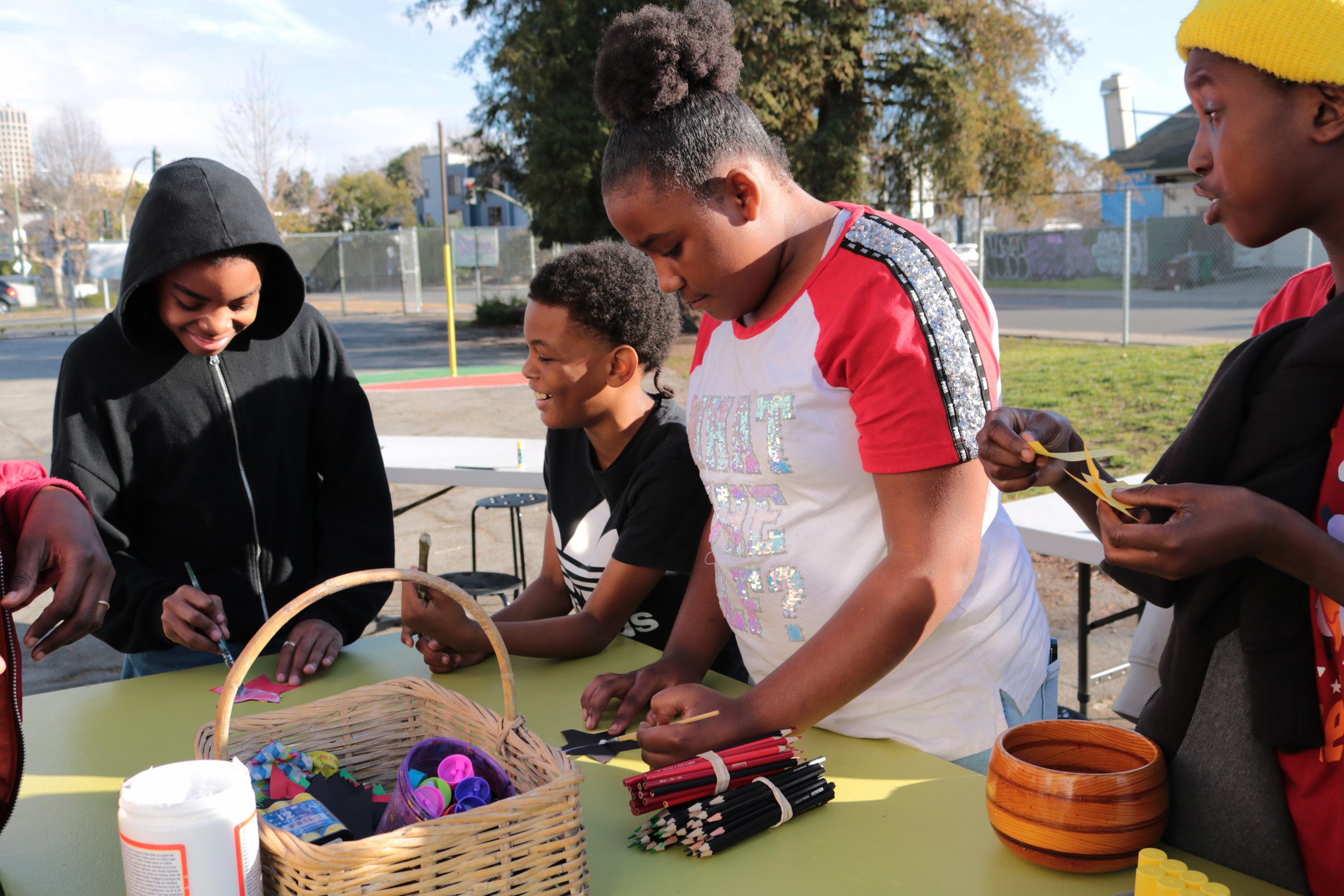




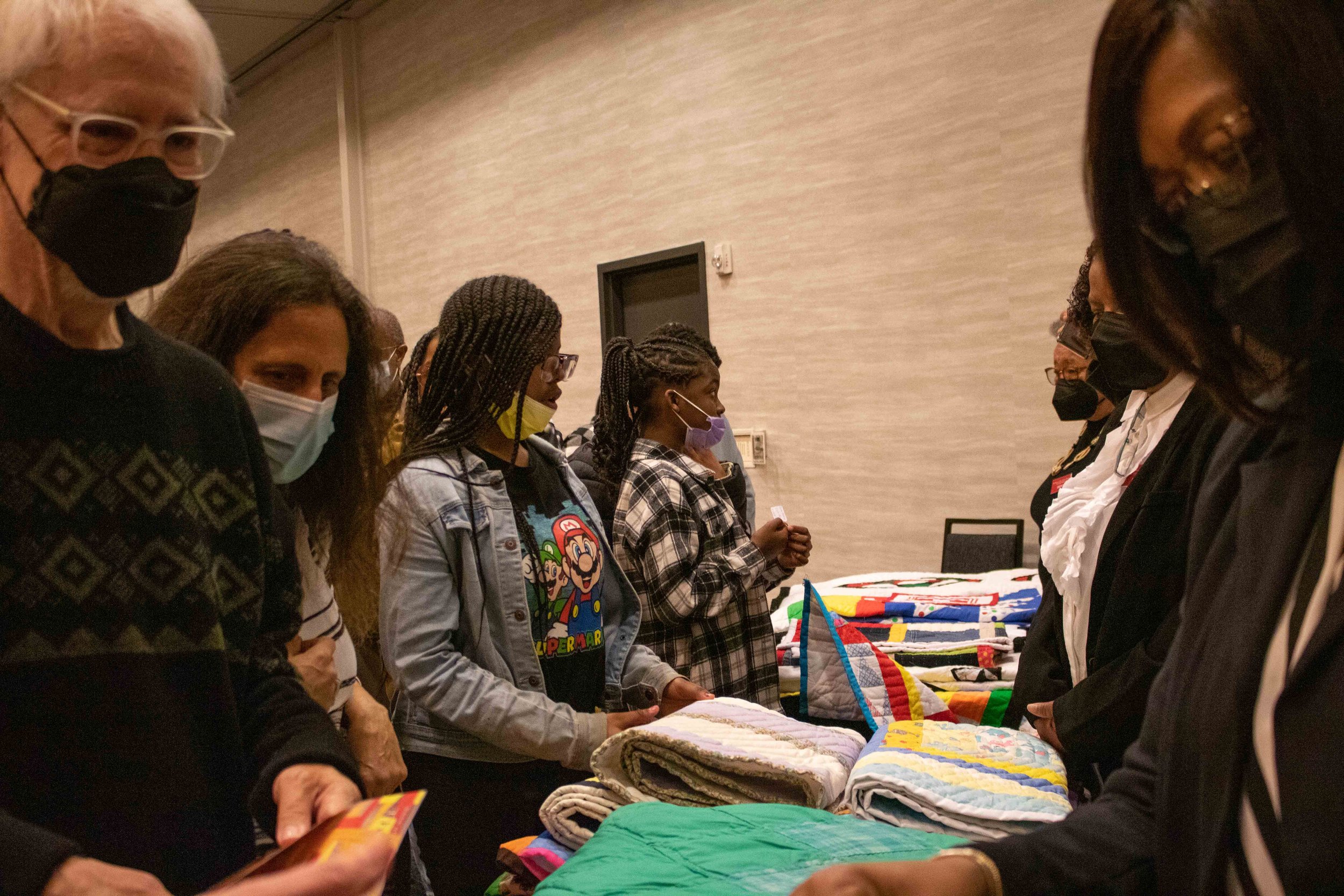
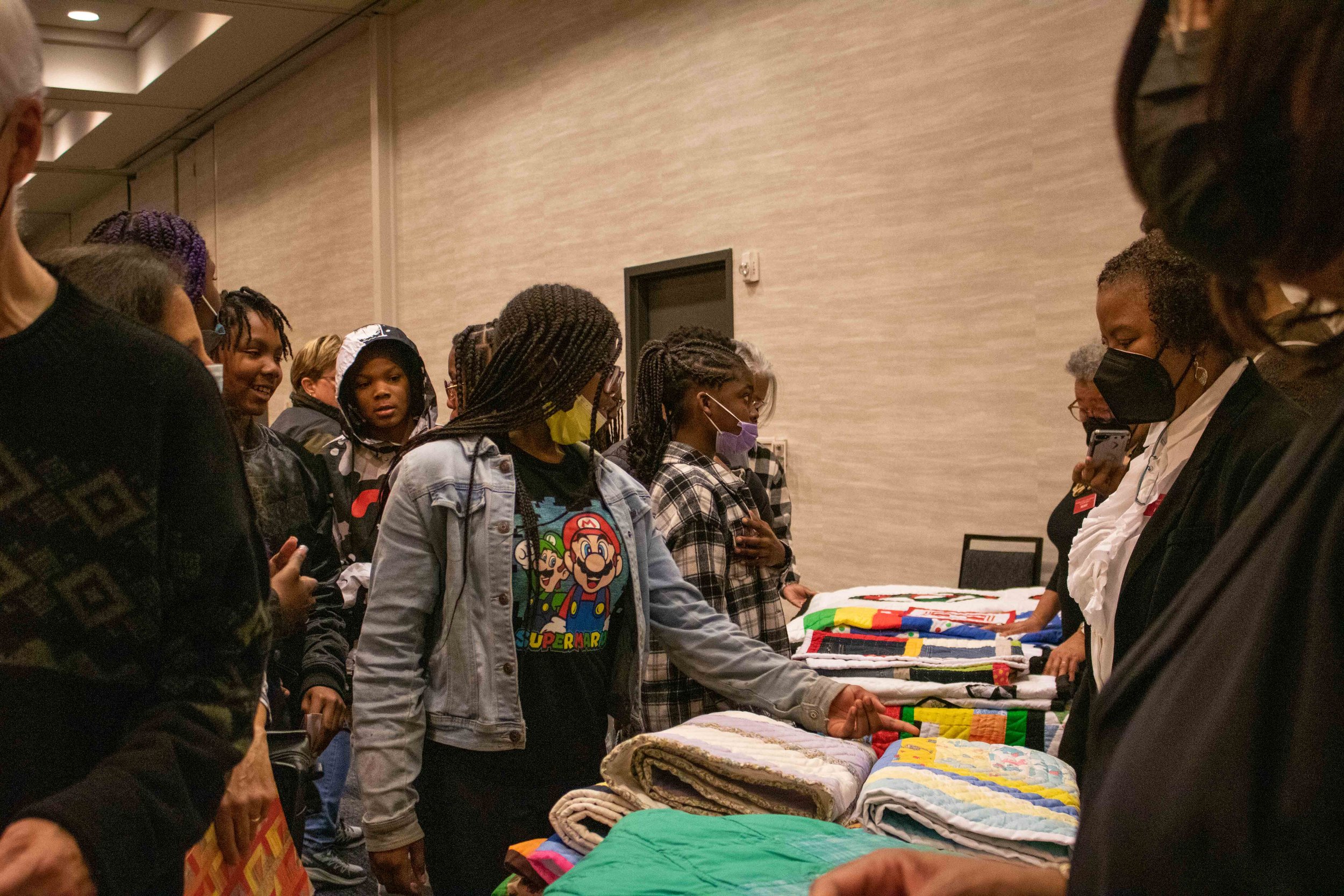



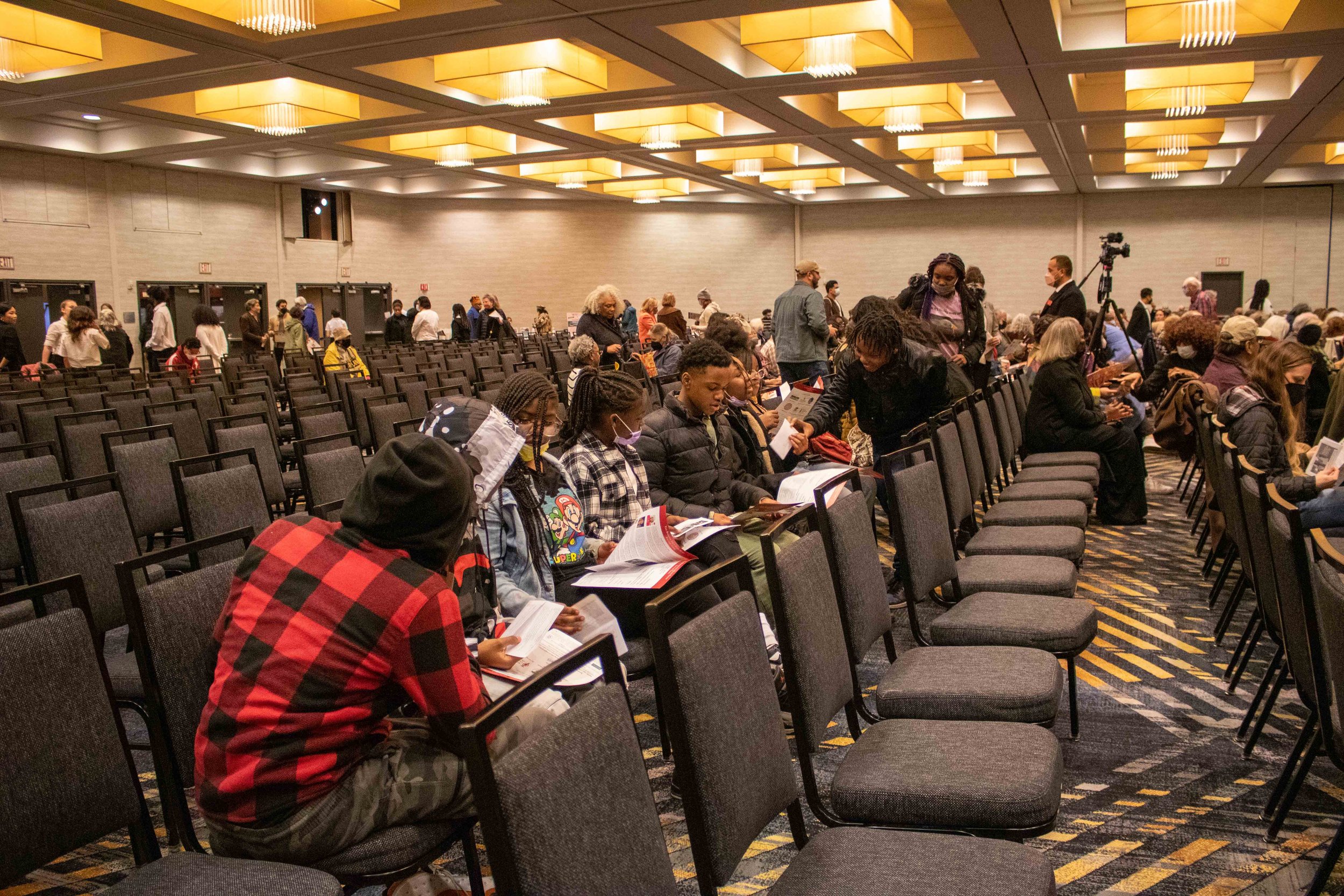
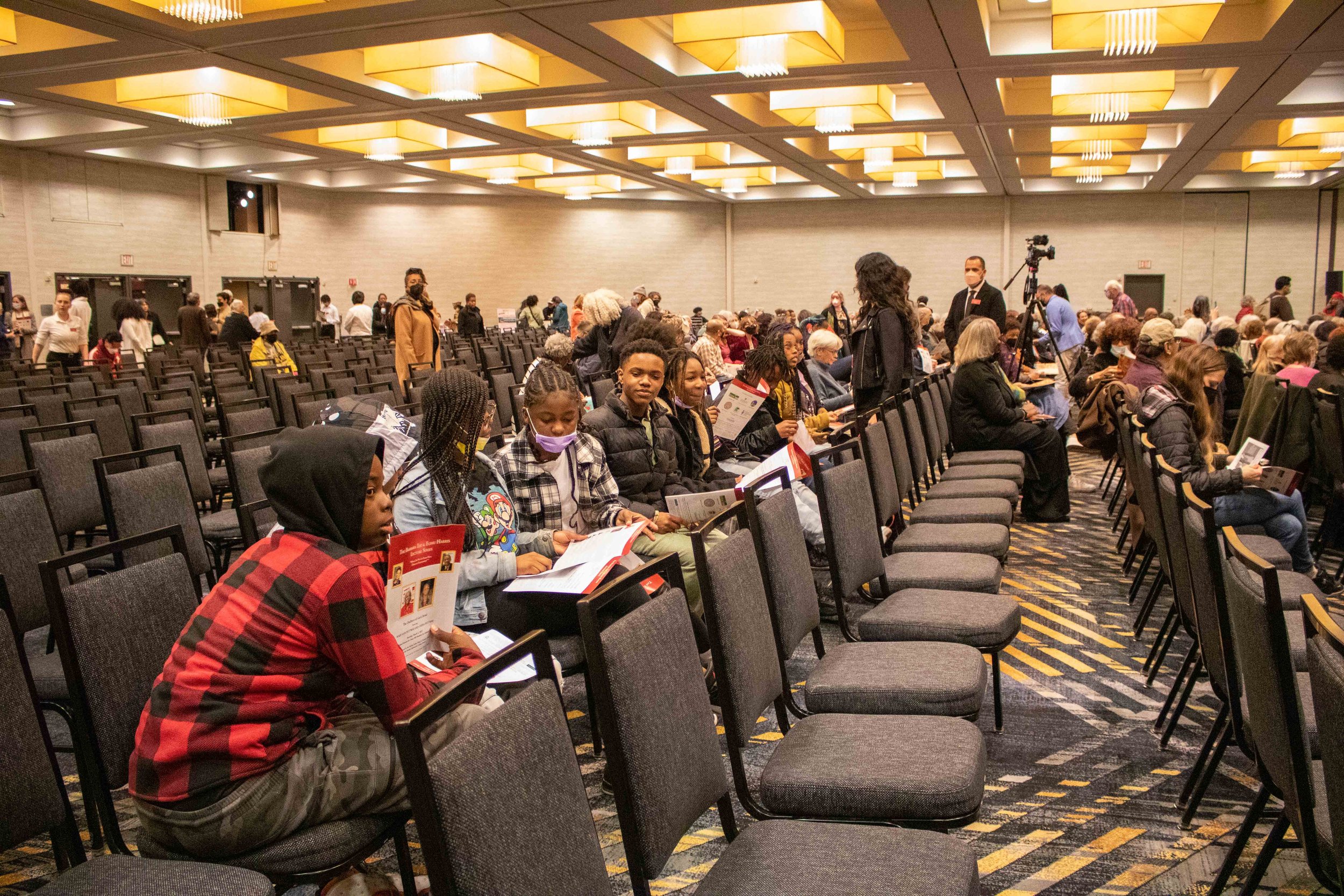

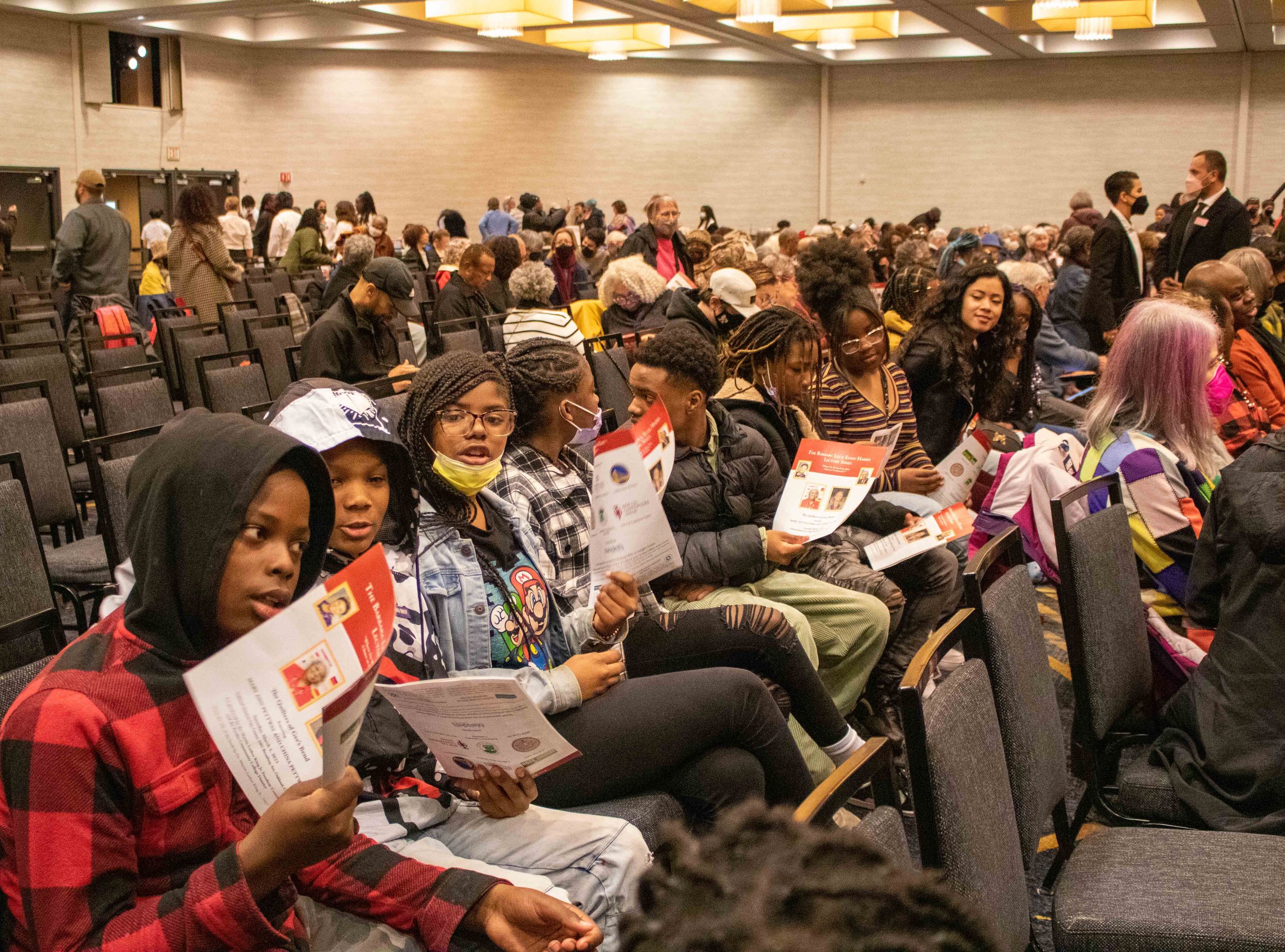


As a continuation of their Gee’s Bend studies and canvas quilt-making, West Oakland Middle School students in Teaching Artist Etty Alberto’s after-school class took a riveting field trip in March. The students toured the Mercury 20 Gallery to see Stopped in Motion: Pandemic Art Quilts then attended a lecture hosted by the Barbara Lee and Elihu Harris Lecture Series, featuring Mary Ann Pettway, Executive Director of the Gee's Bend Quilters Collective, and Collective members China Pettway and Julia Pettway.
The importance of observing handmade quilts in an Oakland gallery and hearing directly from the Gee's Bend quilters cannot be understated for our students. They leaned into the quilts closely, pondering each intersecting patch of fabric and defined stitching style the seasoned textile artists incorporated. The intricate details were met with wide-eyed fascination. Questions burst free regarding fabric scrap origins and pattern choice.
In tandem with the curious energy of their gallery experience, the students listened to the invaluable generational wisdom shared within the Gee's Bend quilters' stories with respect and awe. When planning the field trip, Etty "wanted kids to take away that despite adversities, we always find a way to survive, and that art is always at the forefront of it. The way we live is art, as simple as making a quilt, an everyday object we ritually use." The love, strength, and creative fluidity sewn within each quilt was evident to both the students and field trip chaperone Phyllis Hall, Program Director of The Center for ArtEsteem. She appreciated how the Pettways were "lovingly candid about the little things in their life." Moments like "sitting in the kitchen and being with their mom" and "doing quilts for days and days in a row... or [starting a quilt] because they were upset about this or that."
Art's unifying power of healing brings a past ArtEsteem student's sentiments to mind. Aniya from Community School for Creative Education shared: “Art is a way to release all of your bad feelings, all of your pain; you can turn your pain into something beautiful like a painting on a canvas or a mural in a freeway underpass.” In an IQ Learning Network interview, Mary Ann Pettway reflected upon a similar notion: “Being a quilter is very therapeutic… it’s like medicine. You don’t think about pain… it’s very relaxing.” The universal human experience with art as a vector of emotion and catalyst of expression resonated deeply during the field trip.
Thanks to the work of the Mercury 20 Gallery, the Barbara Lee and Elihu Harris Lecture Series, and the wise women of the Gee’s Bend Quilting Collective, the ArtEsteem program is evermore enriched.

